Comprehensive survey of early Japanese abstract painting (and photography). Including Koshiro Onchi, Iwata Nakayama, Saburo Hasegawa, Kiyoshi Koishi, Ryuichi Amano, Ei-Q and many more.
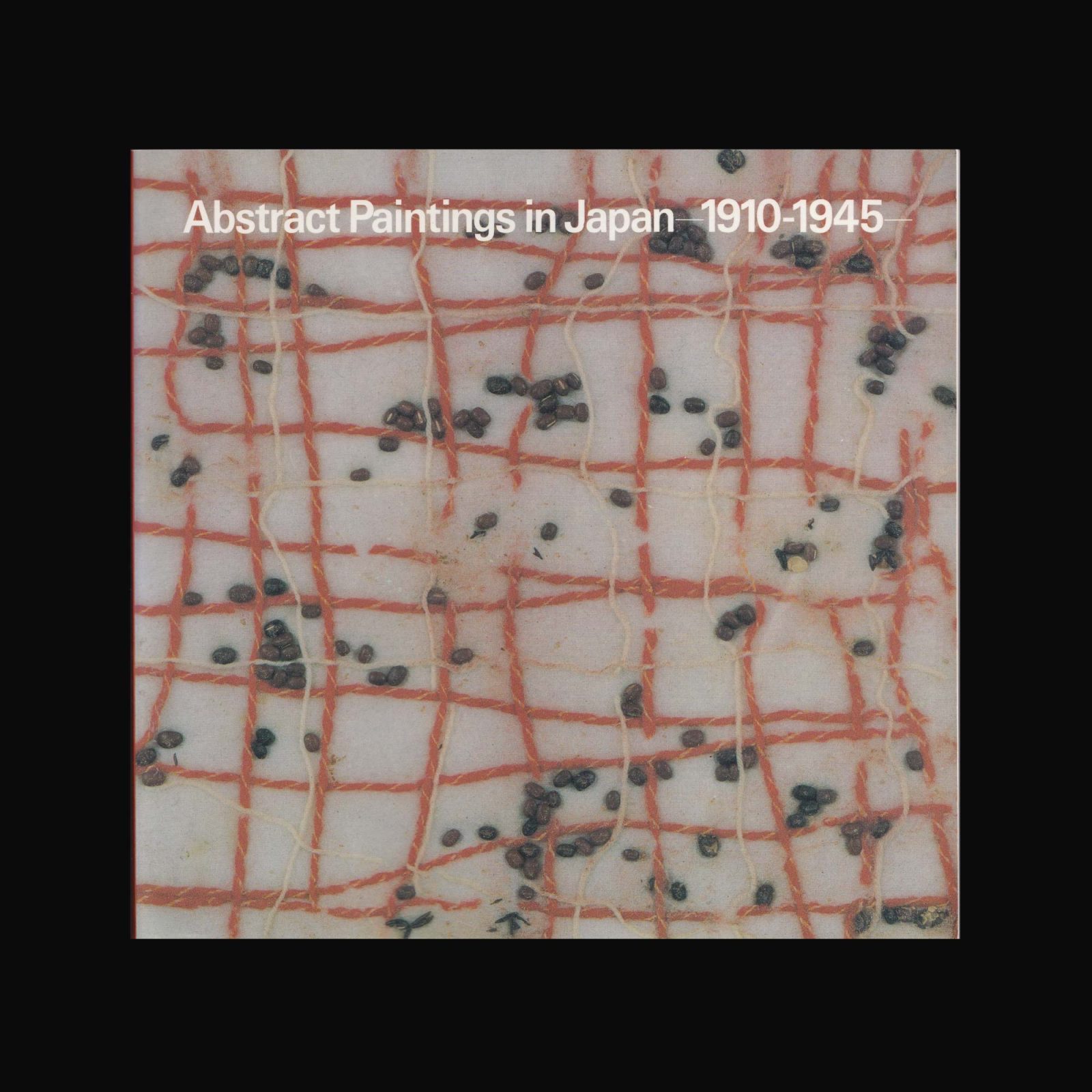
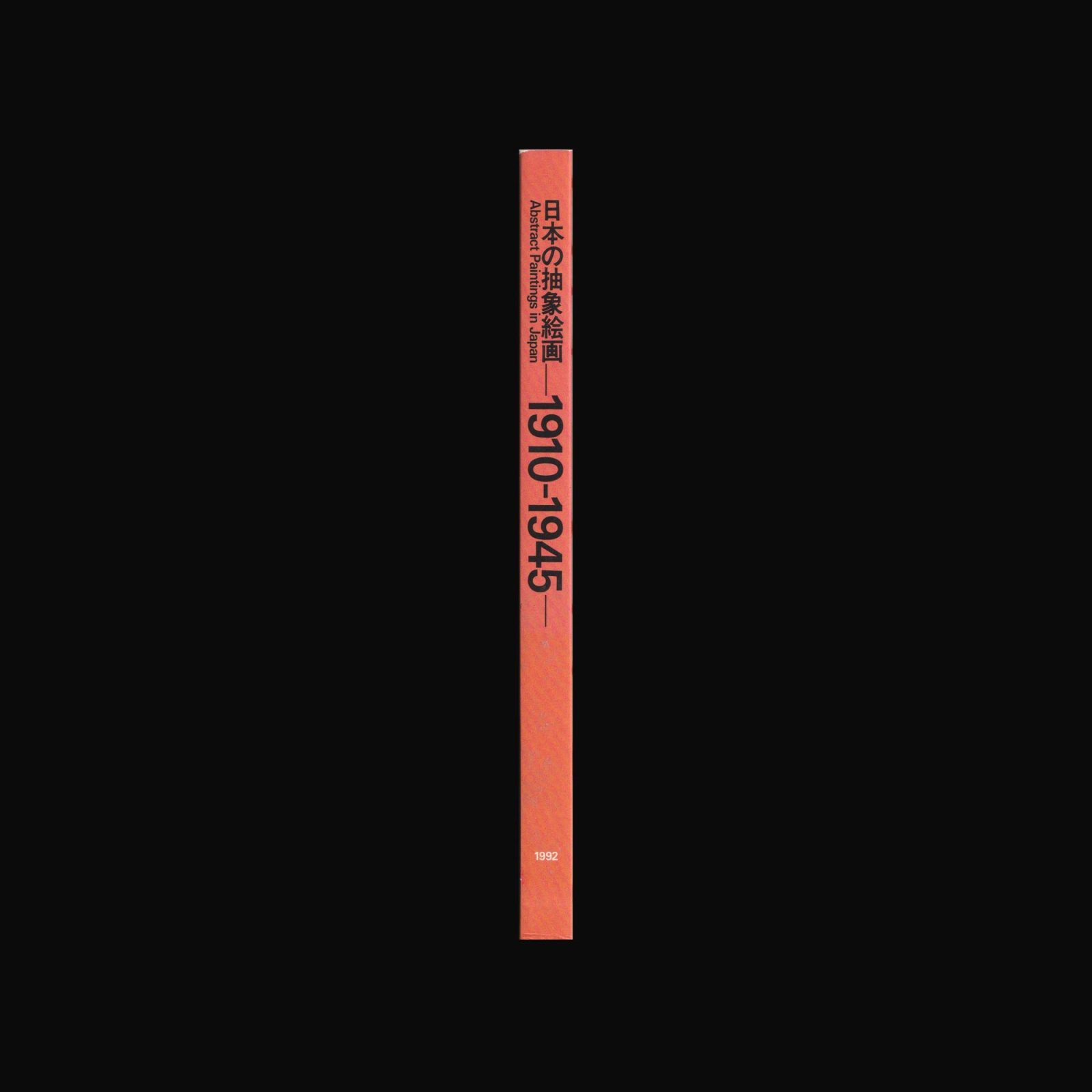
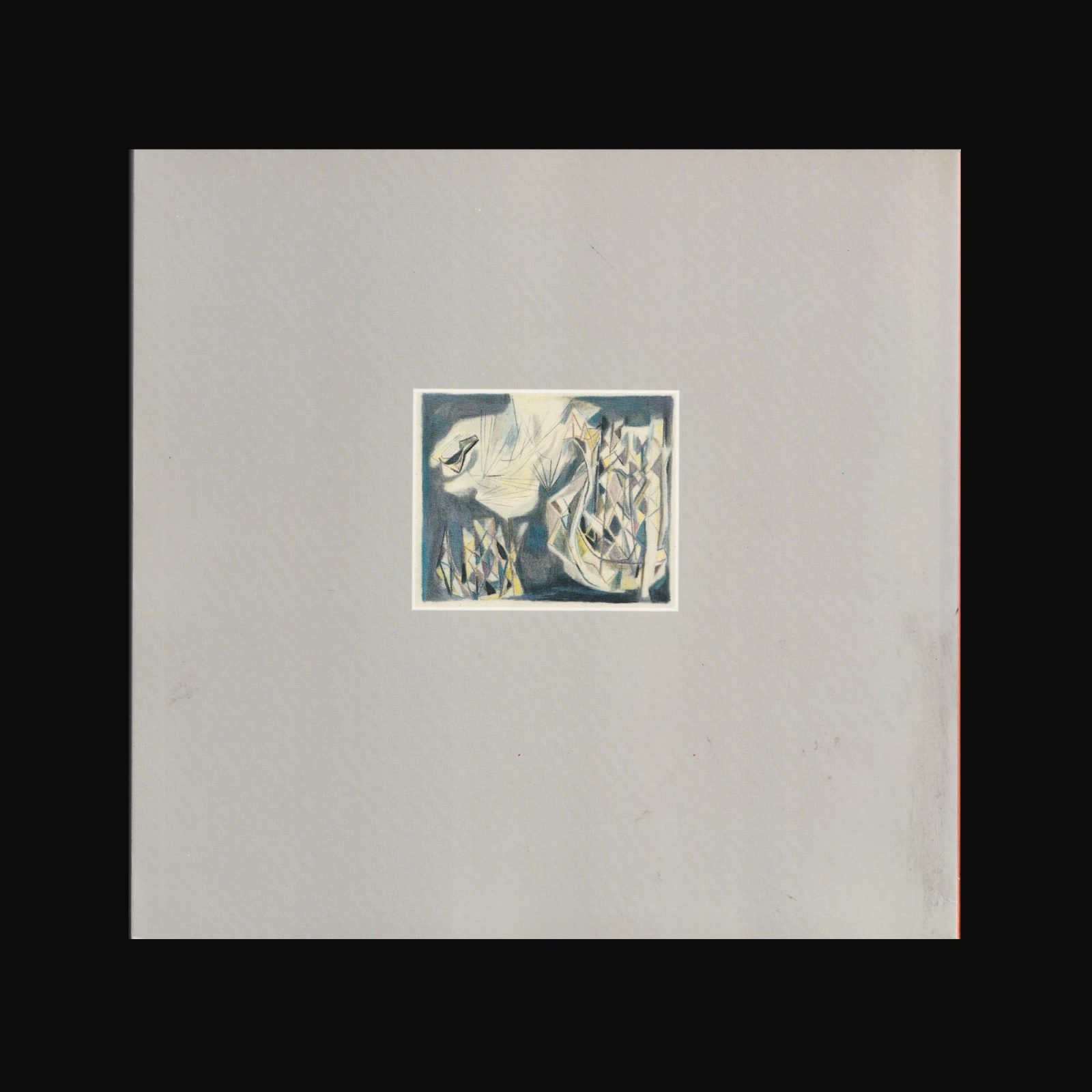
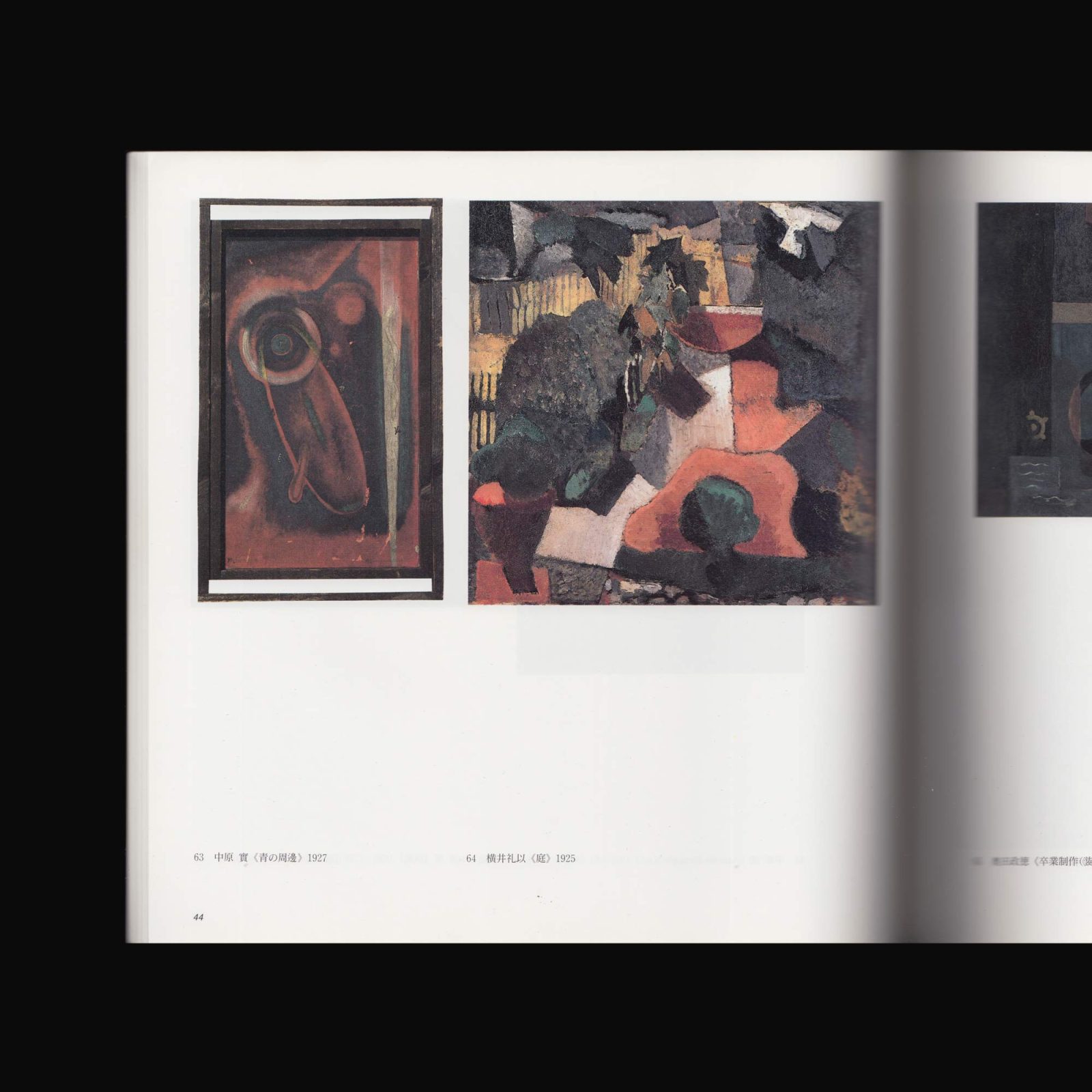
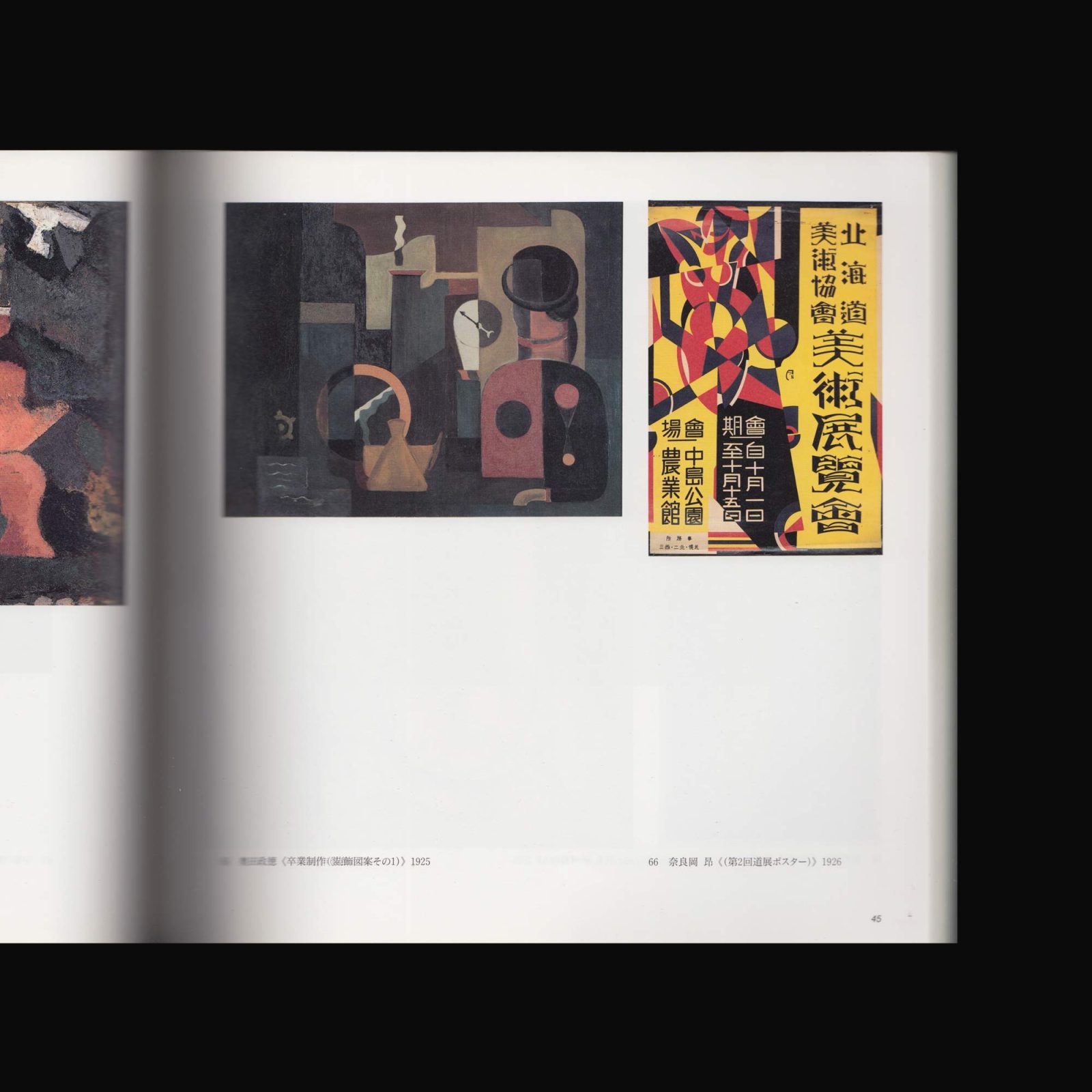
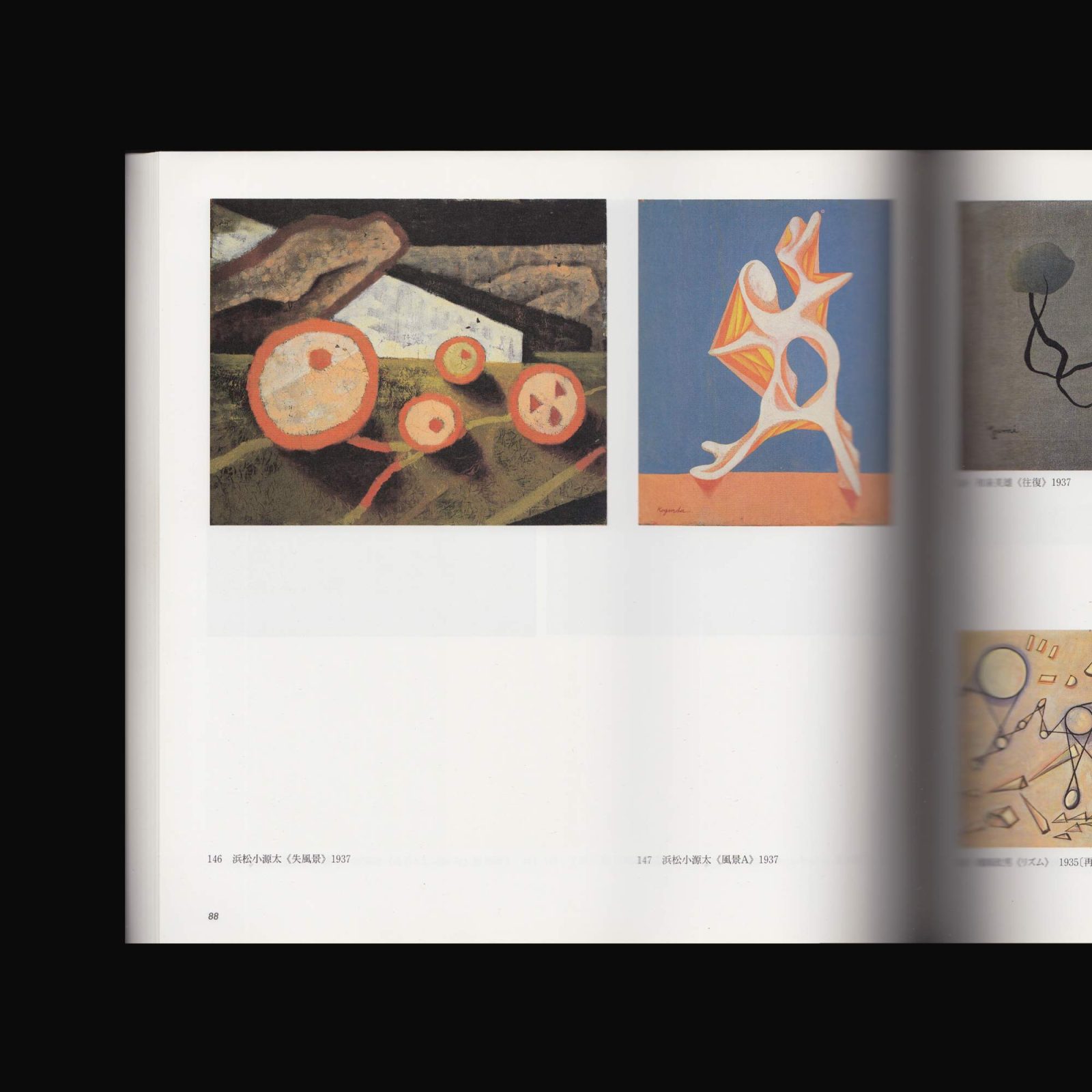
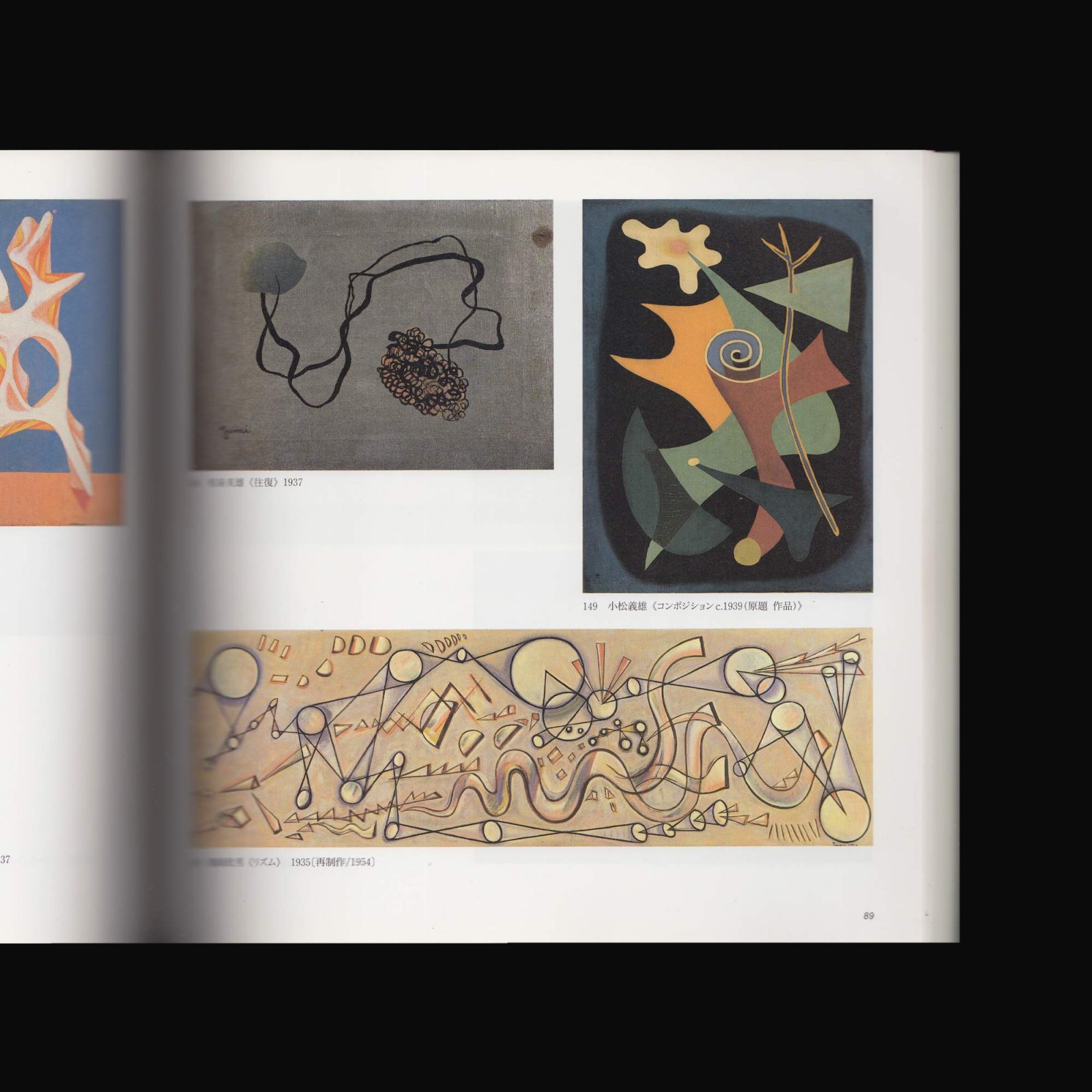
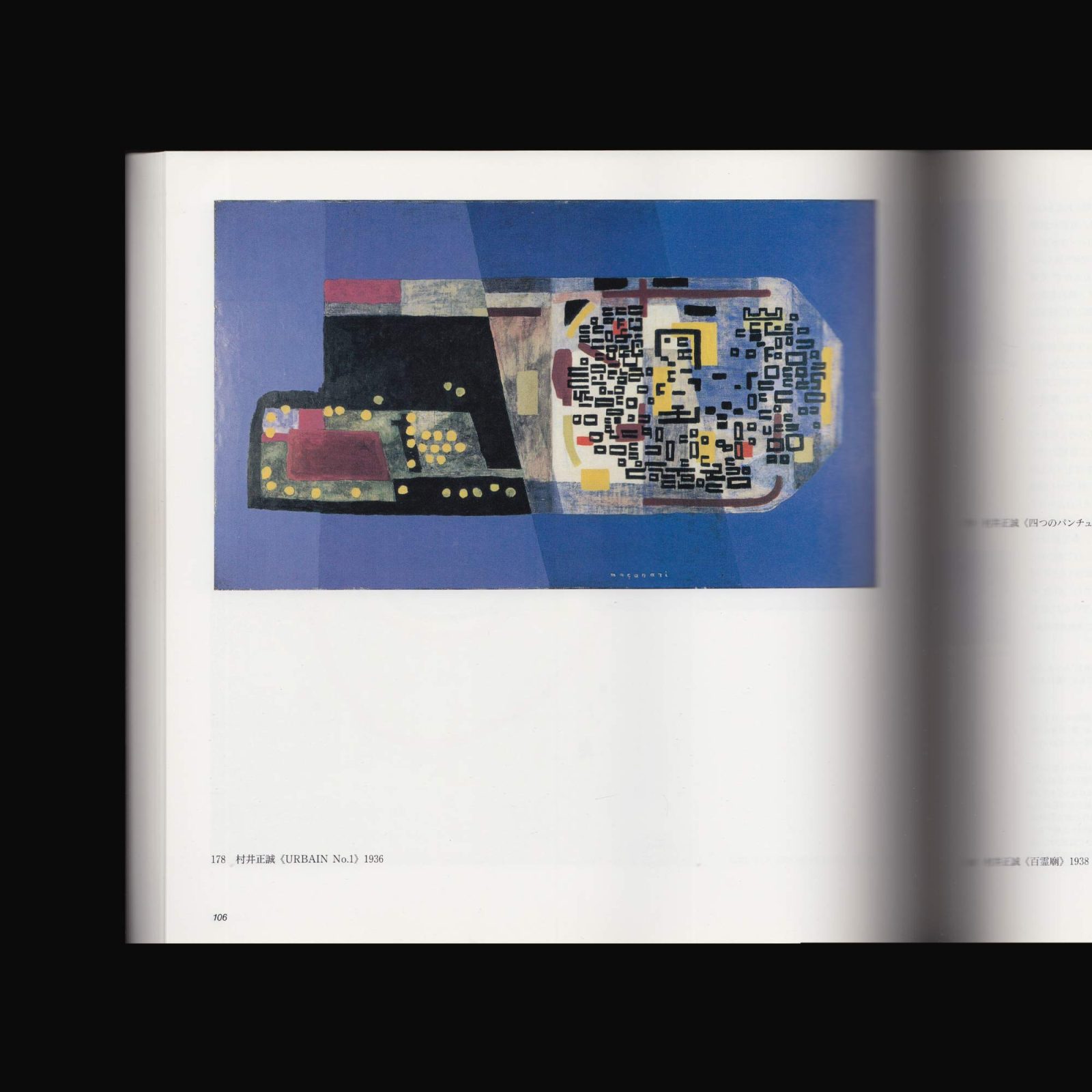
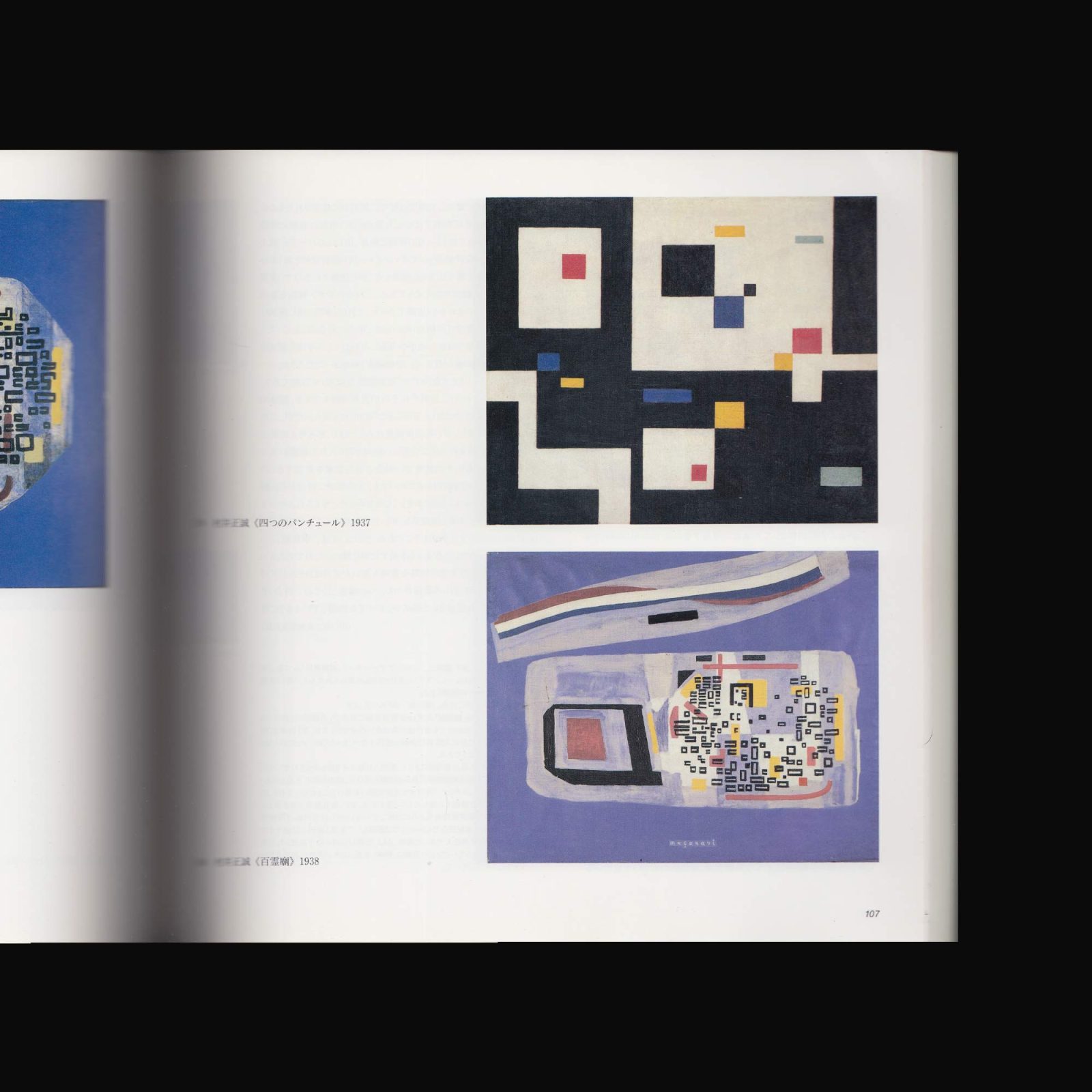
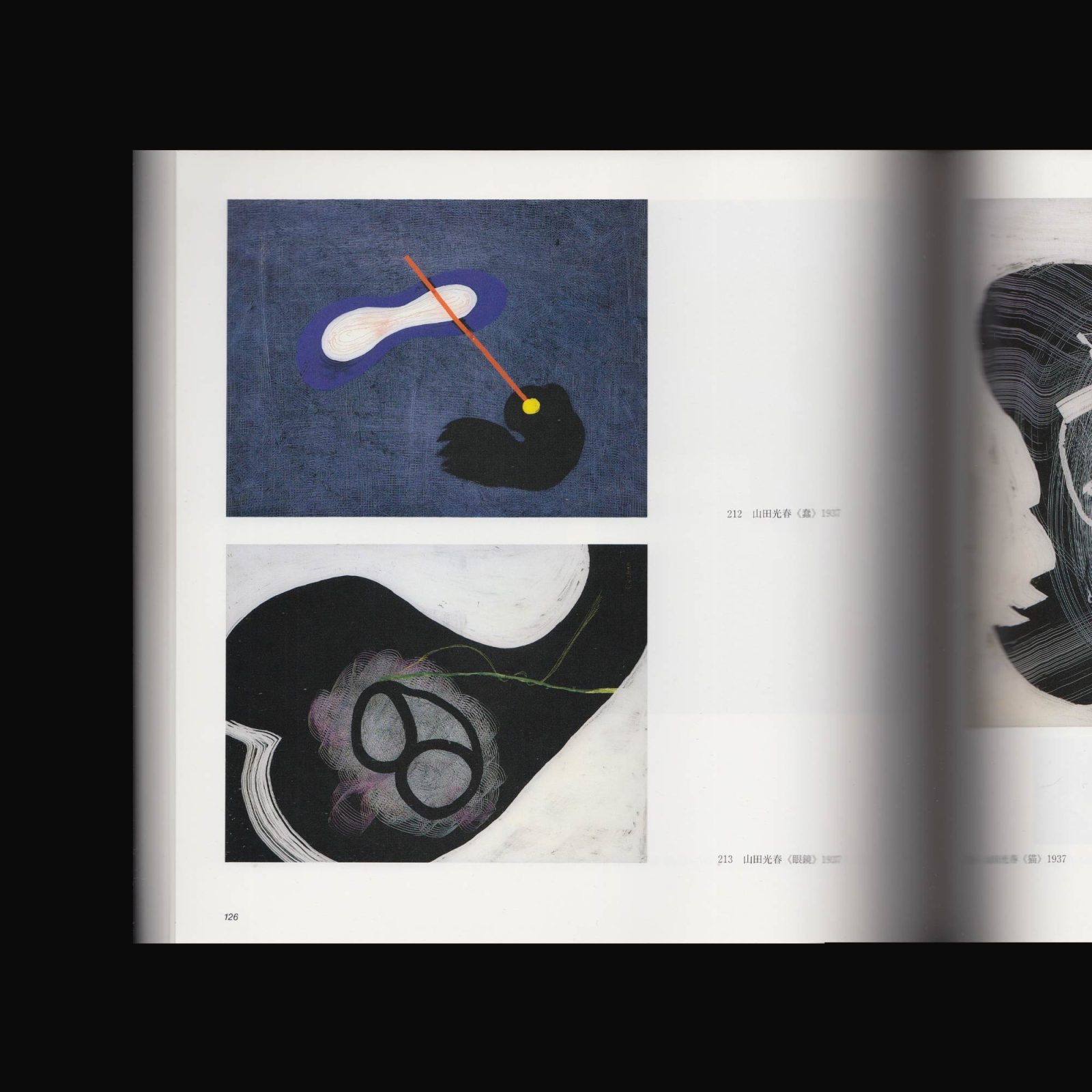
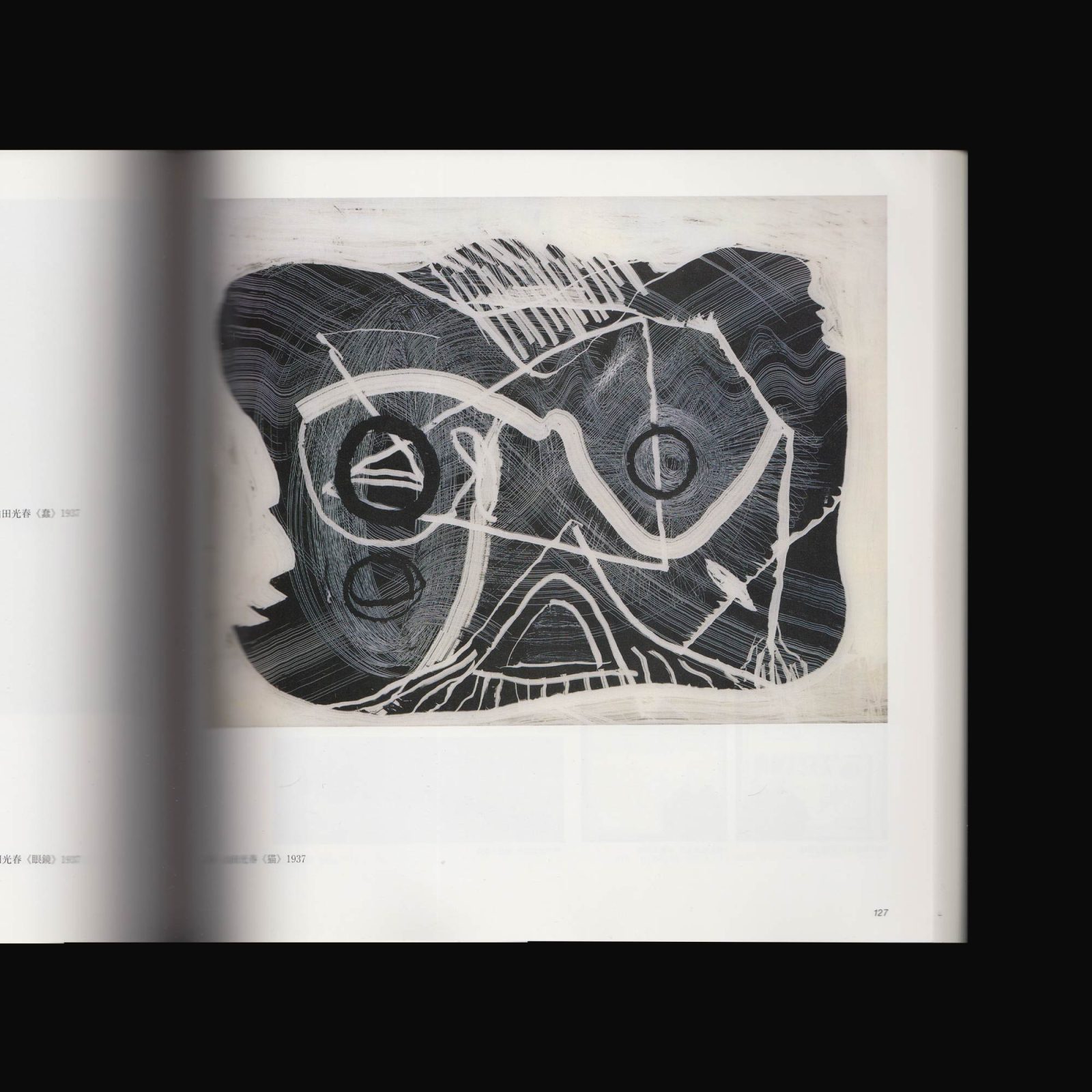
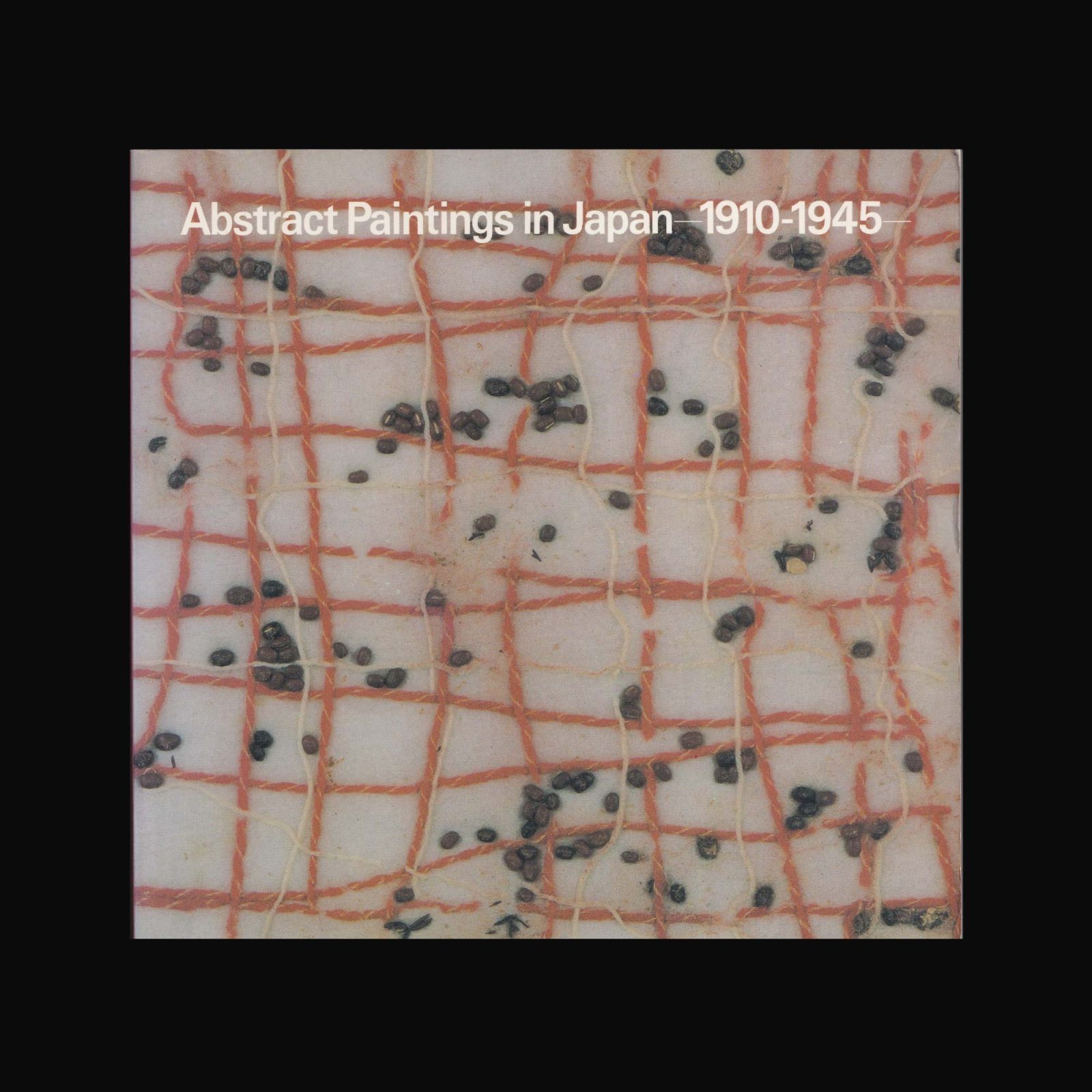
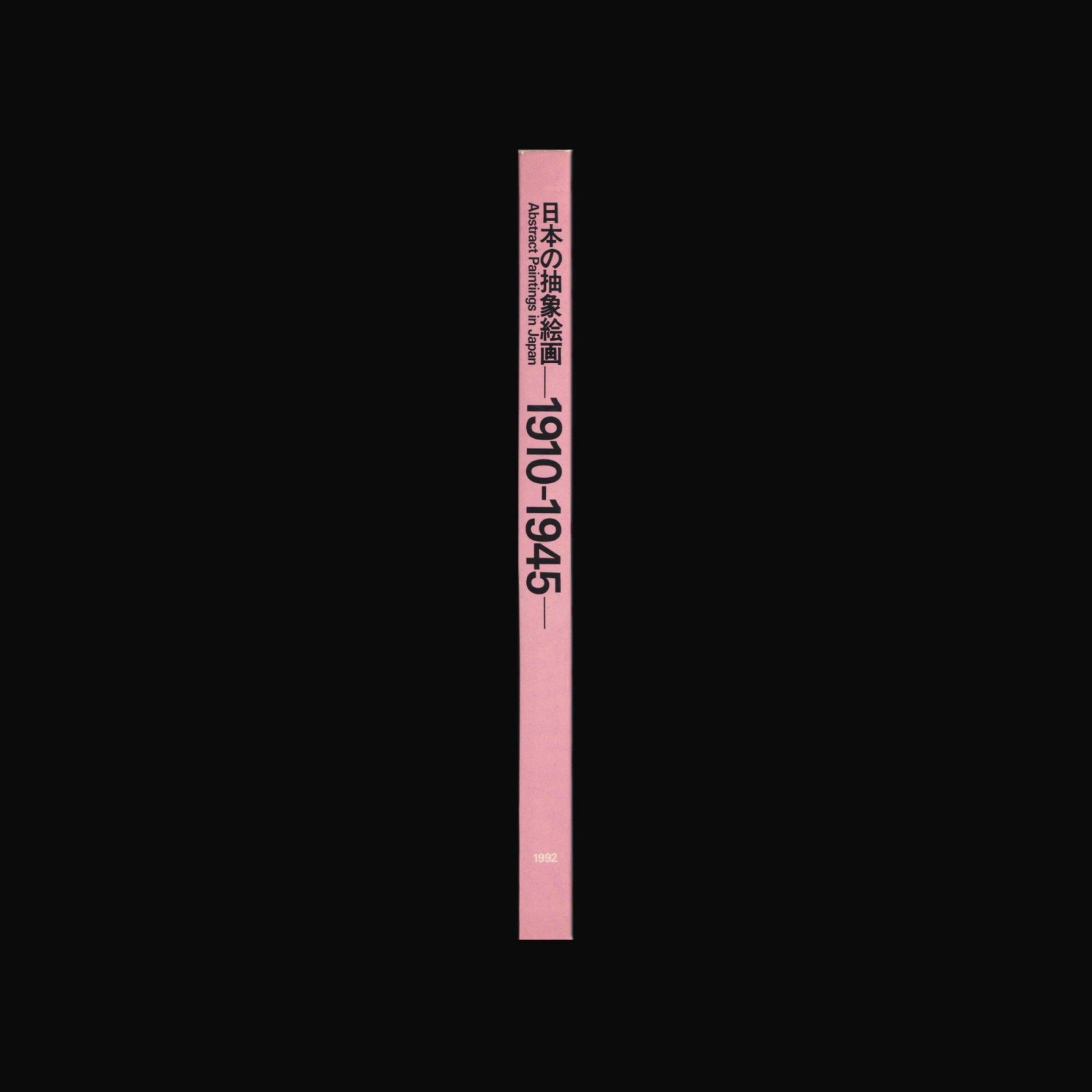
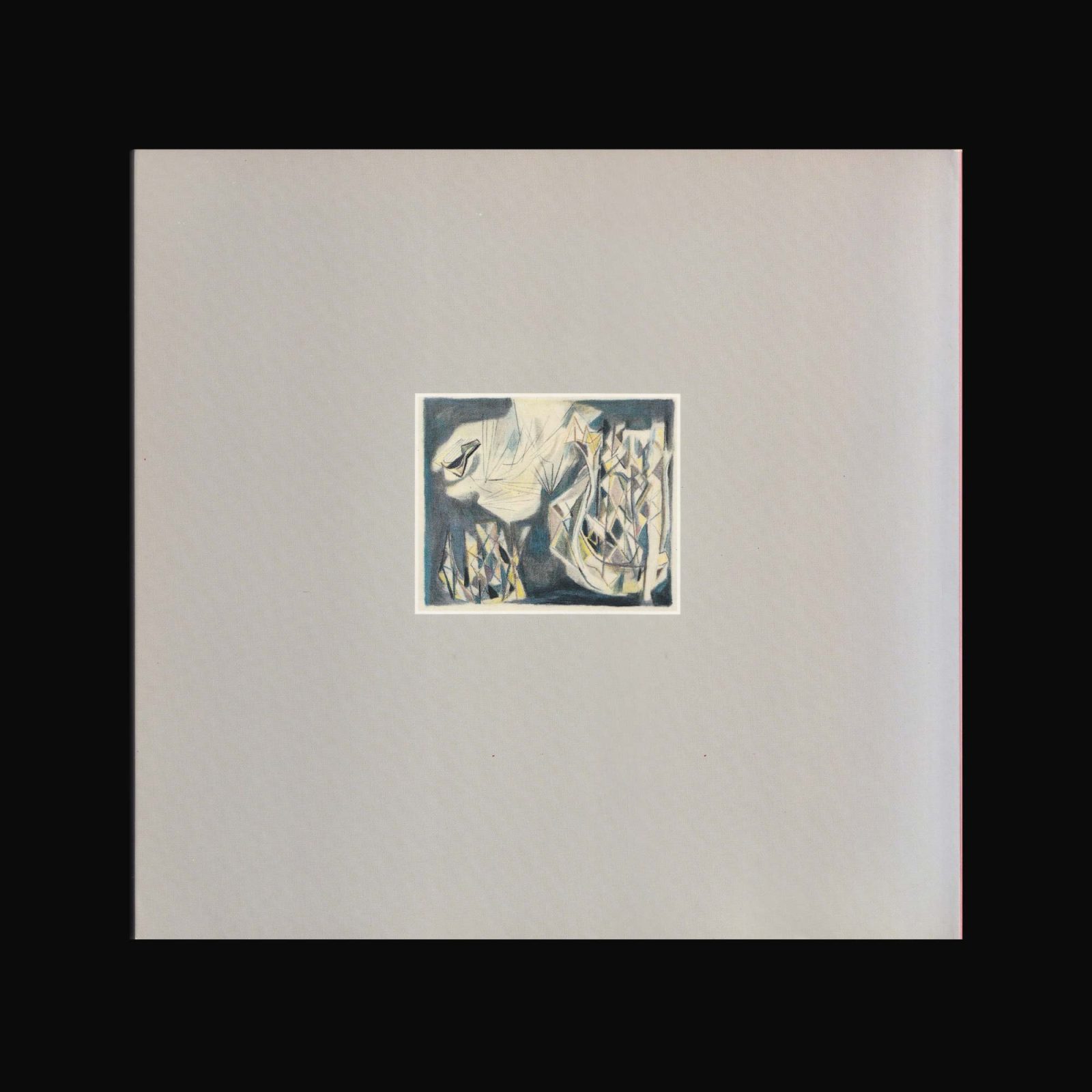








Comprehensive survey of early Japanese abstract painting (and photography). Including Koshiro Onchi, Iwata Nakayama, Saburo Hasegawa, Kiyoshi Koishi, Ryuichi Amano, Ei-Q and many more.
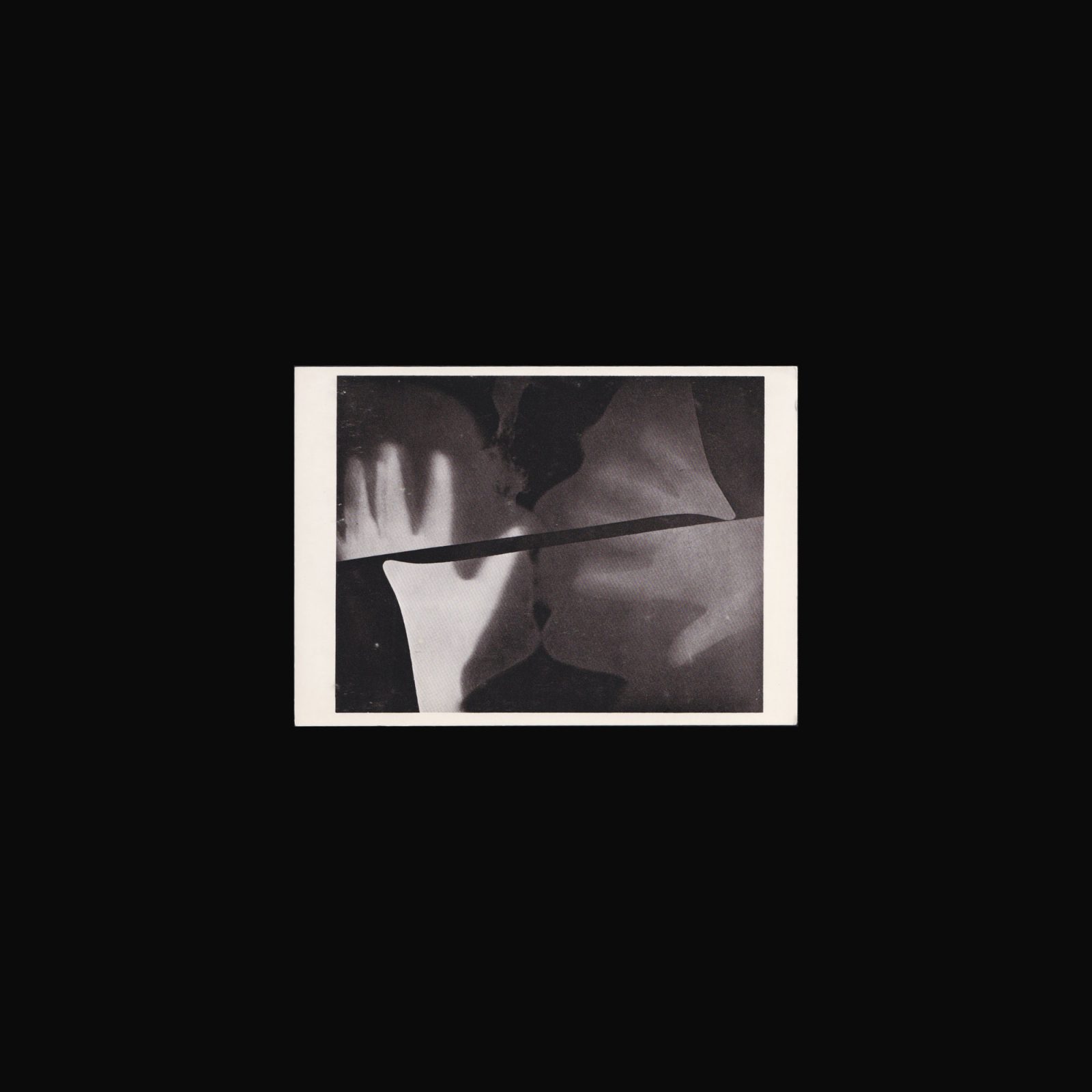
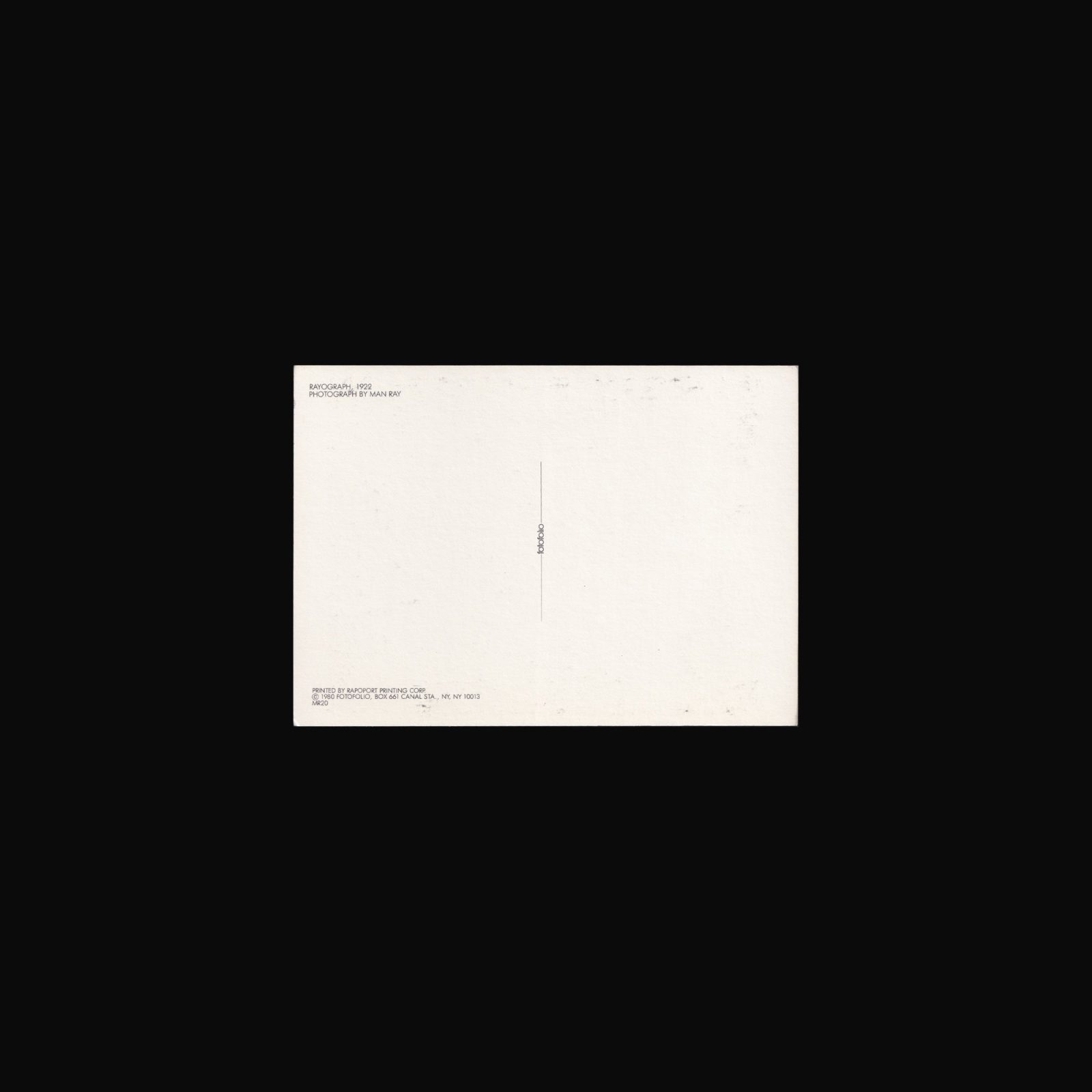
Rayograph is term invented by Man Ray, in which he merged his name with the word “photograph” to describe his particular approach to the technique of making photograms. As old as photography itself, photograms are photographic prints made by placing objects and other elements on photosensitive paper and exposing it to light, without the use of a camera.
*Please note this publication is secondhand and may have some traces of previous ownership.
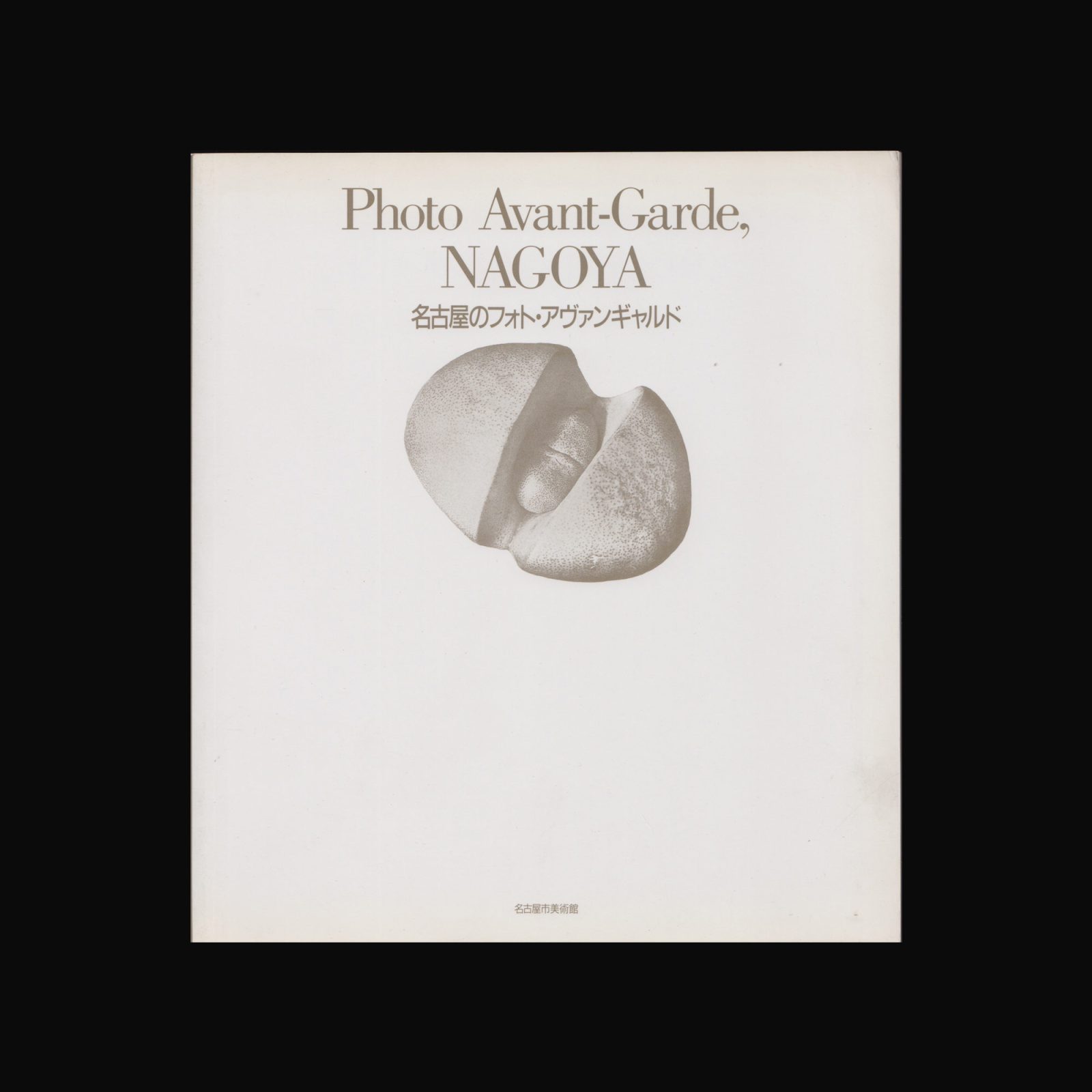

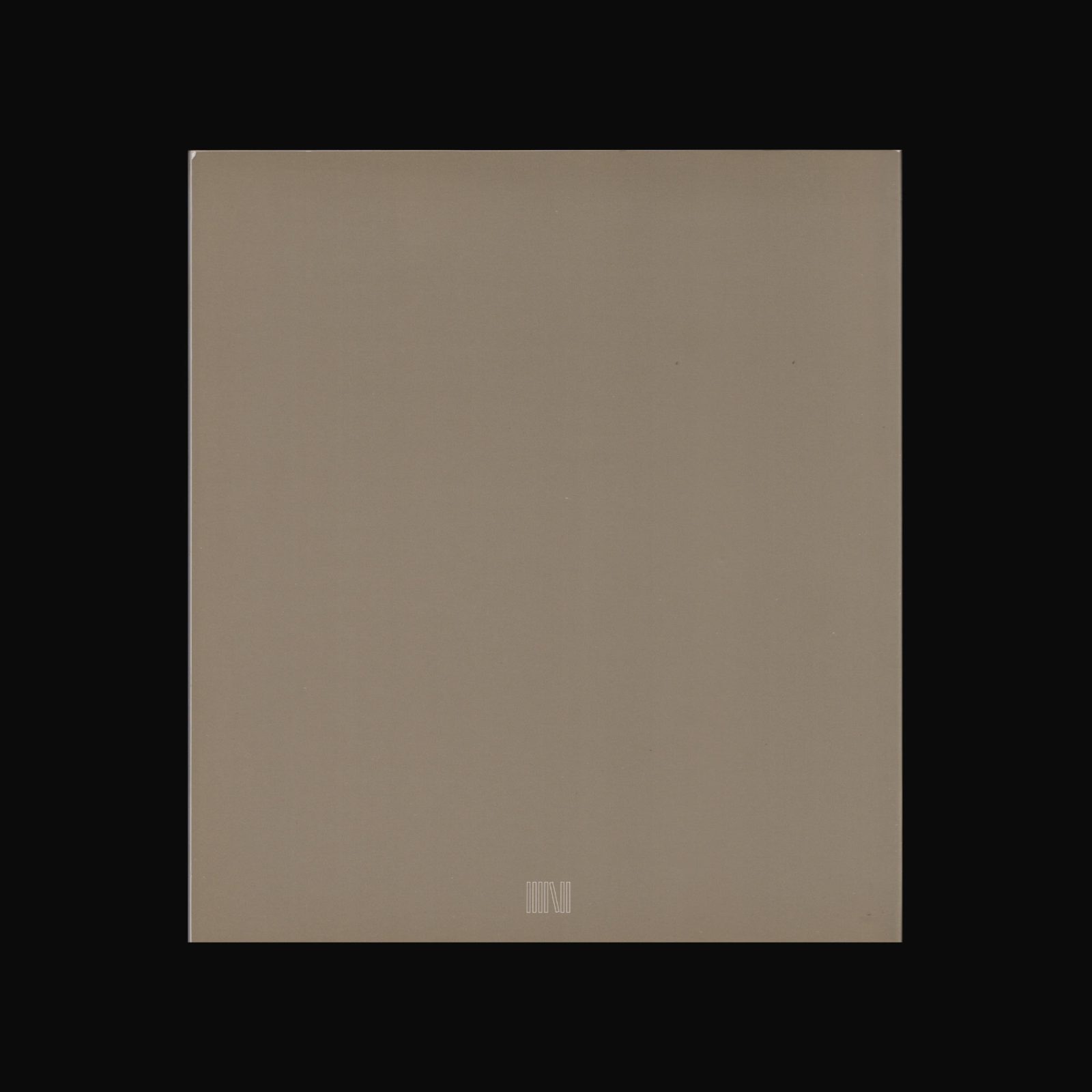
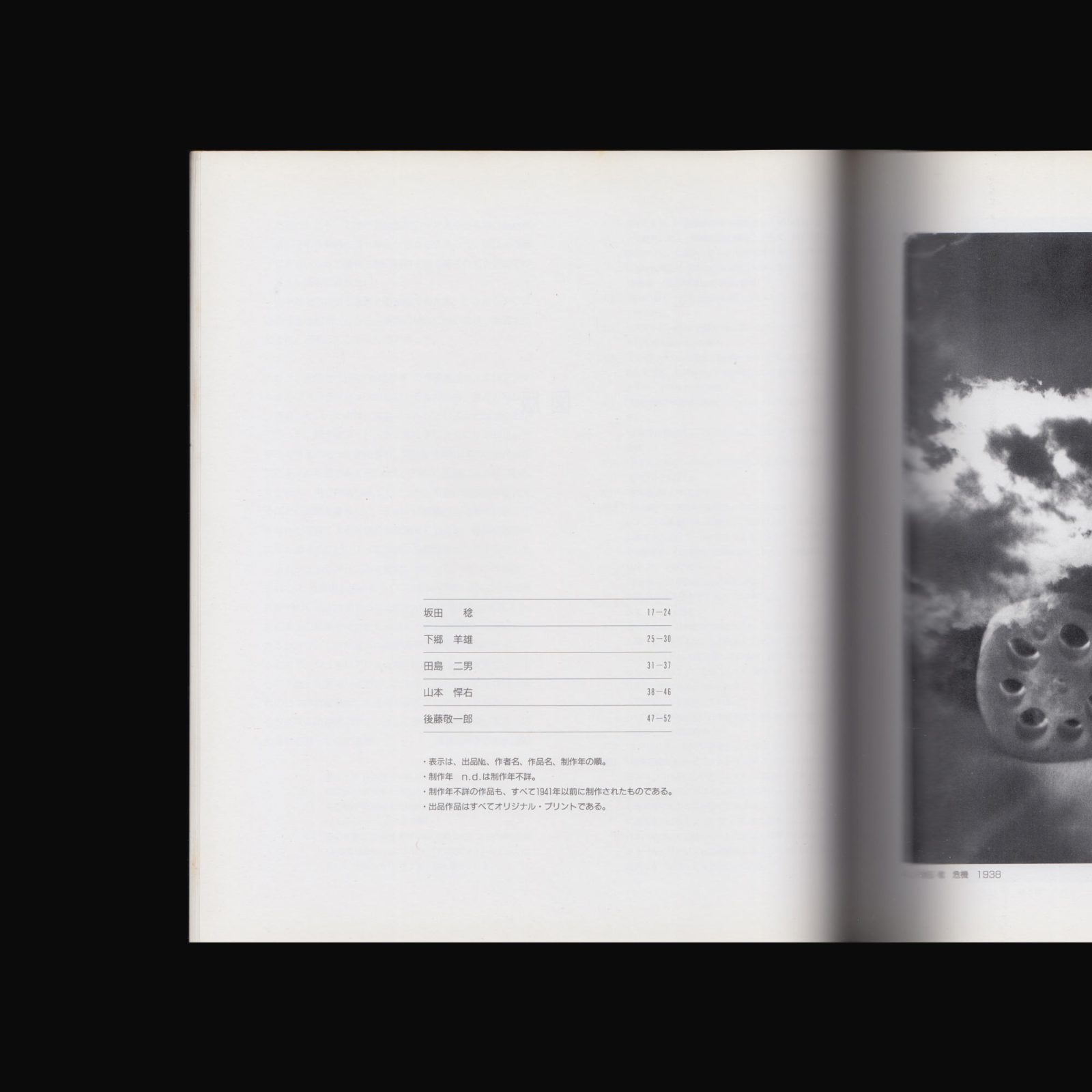
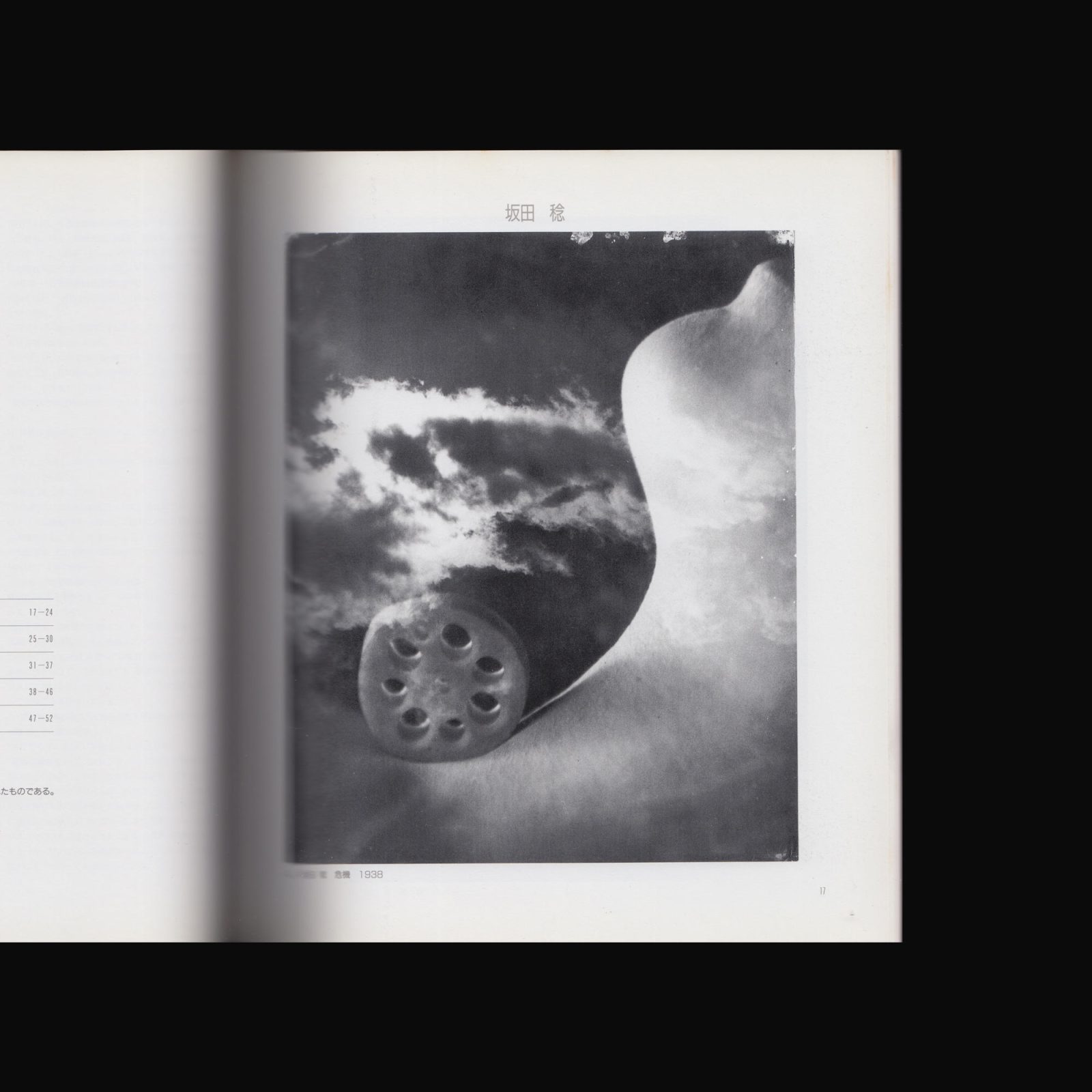
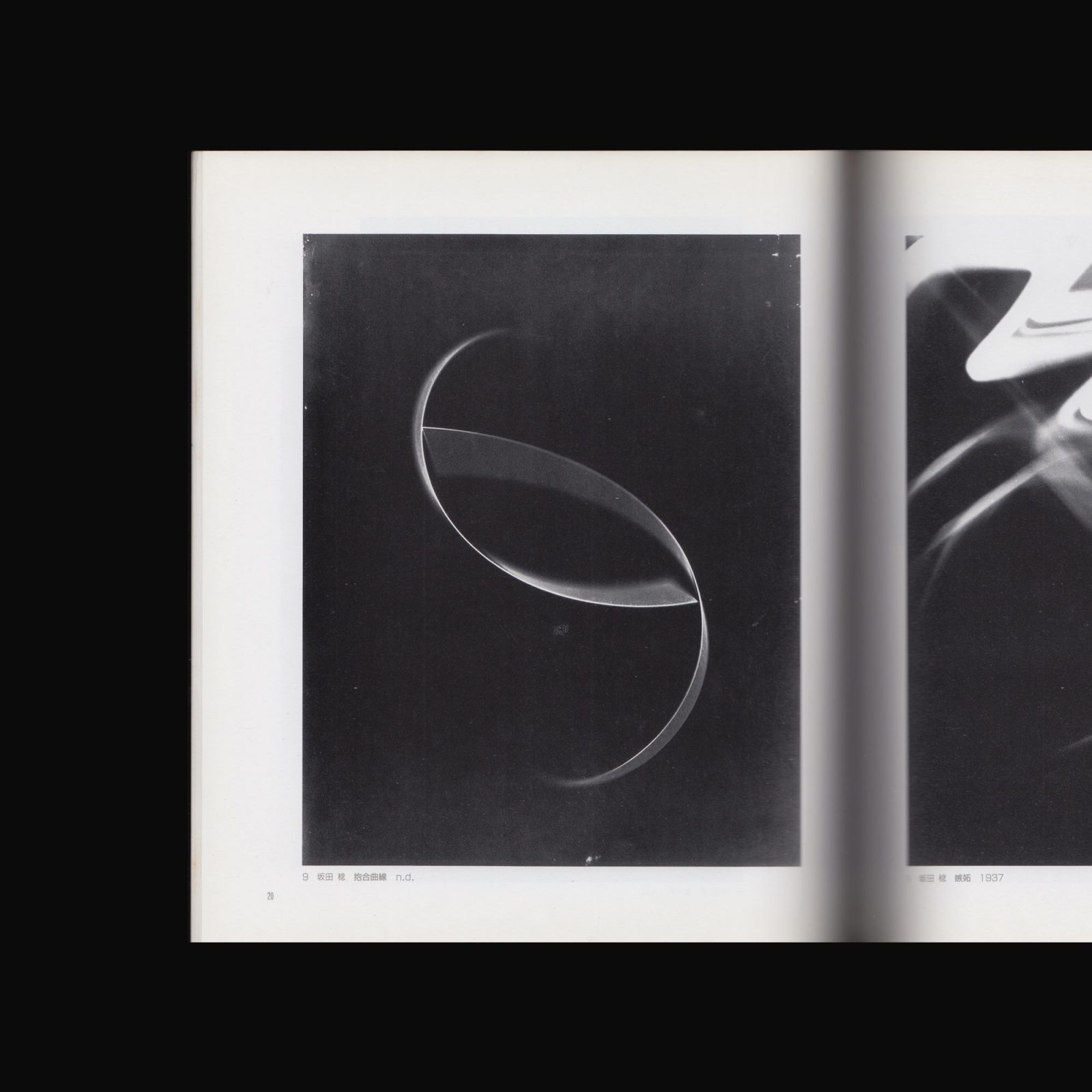
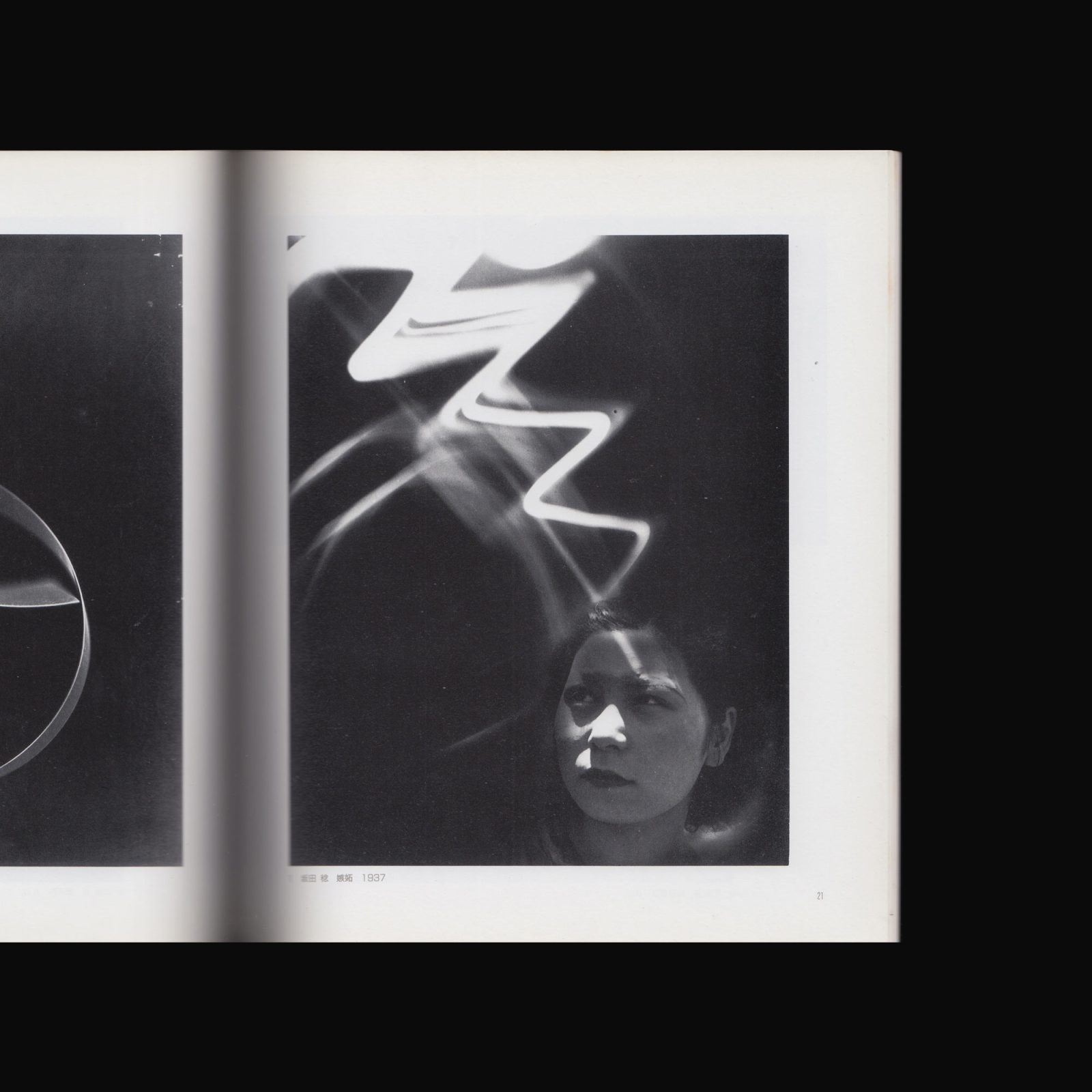
Produced on the occasion of the exhibition Photo Avant-garde Nagoya at the Nagoya City Museum of Art in 1989.
Emerging in the 1930s from the influence of overseas modernism and alongside other groups such as the Naniwa Photo Club in Kansai (Kiyoshi Koishi, Hanawa Ginware, etc.), Ashiya Photo Club (Iwata Nakayama, etc.), and Tampei Photo Club (Nakaji Yasui, etc.), Nagoya Photo Avant-Garde included photographers such as Minoru Sakata, who is known for “modeling photography”, Yoshio Shimozato, a painter who is famous for Mesemu Zoku: Chogenjitsushugi Shashi-shu, Kansuke Yamamoto, who was also active in VOU, and Tsugio Tajima.
*Please note this publication is secondhand and may have some traces of previous ownership.
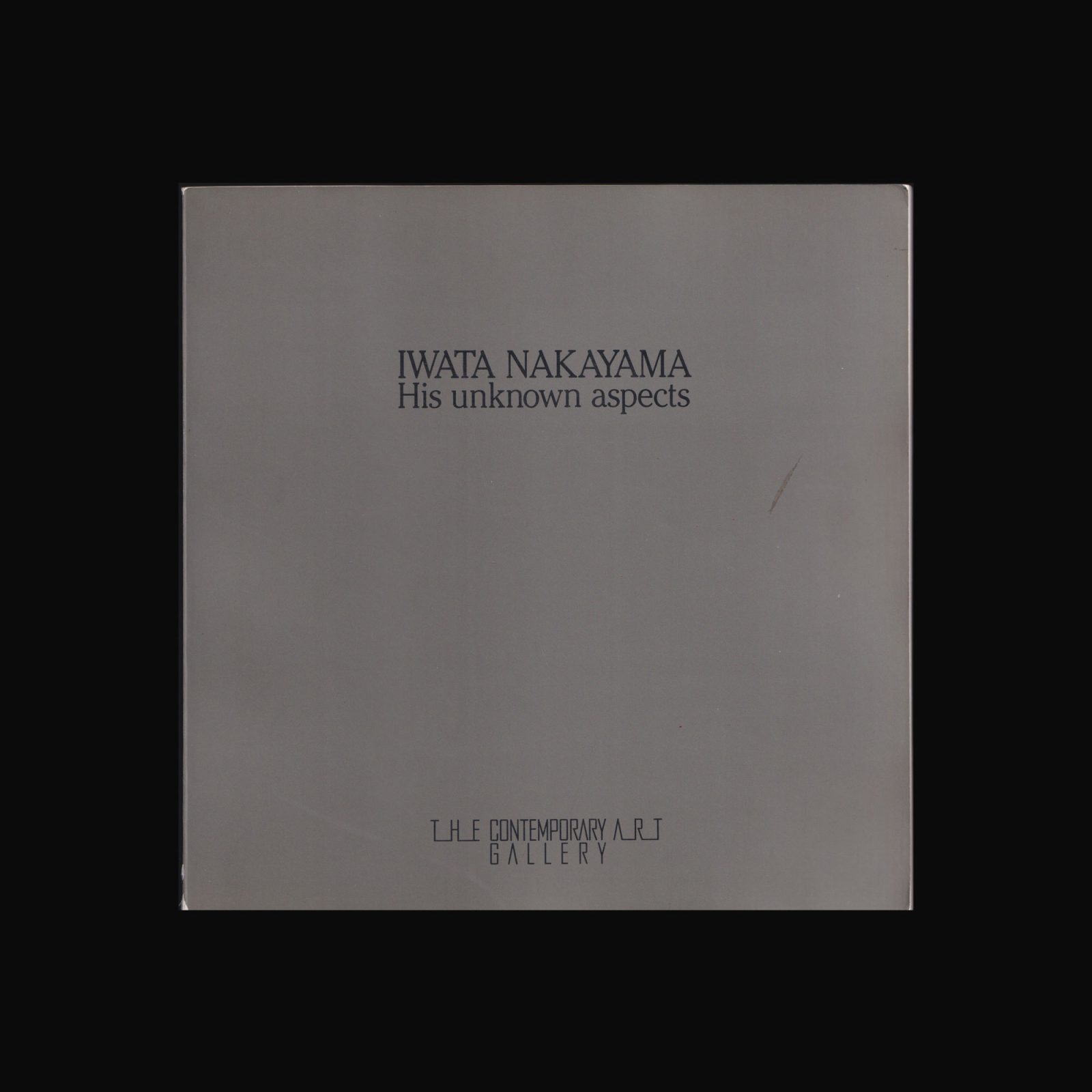

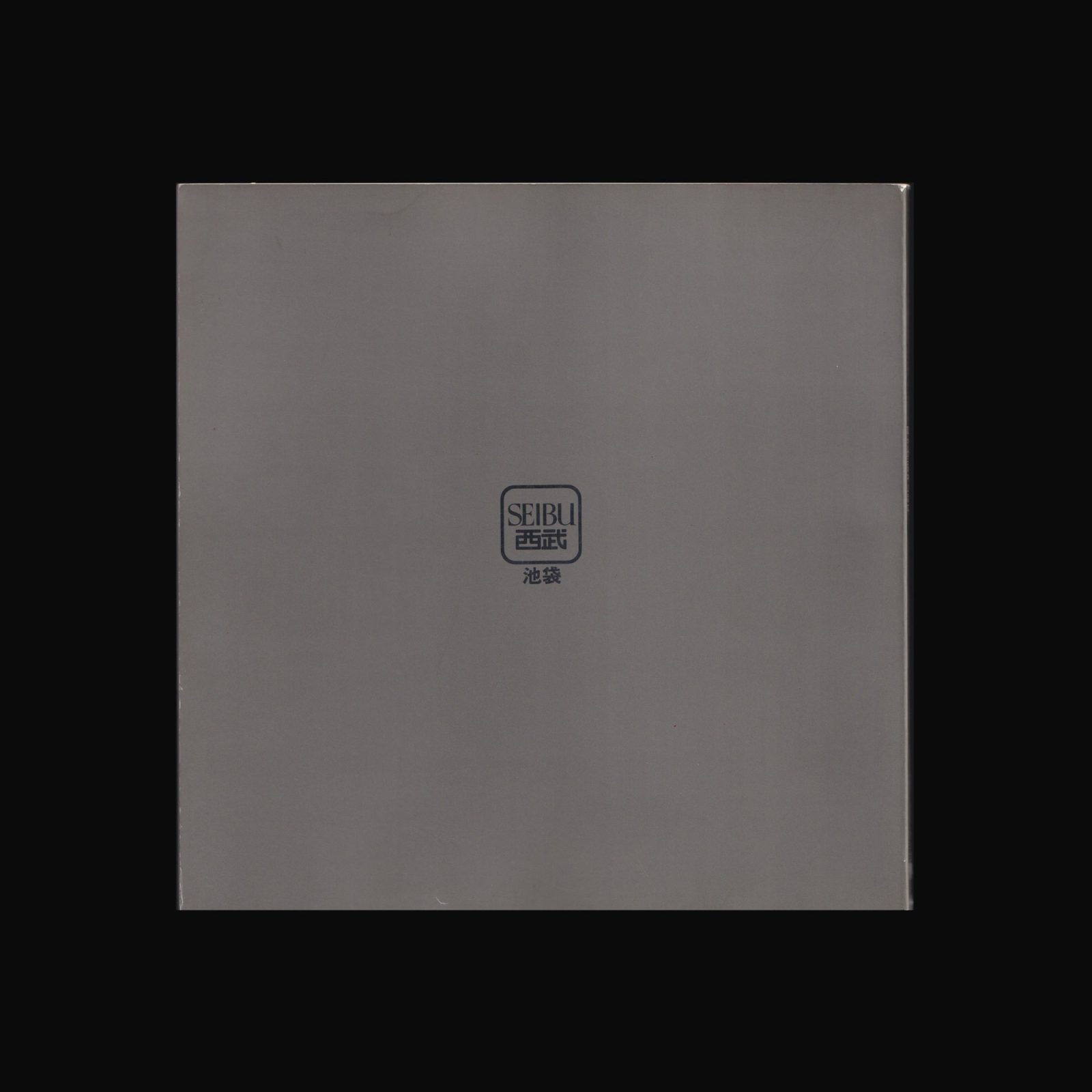
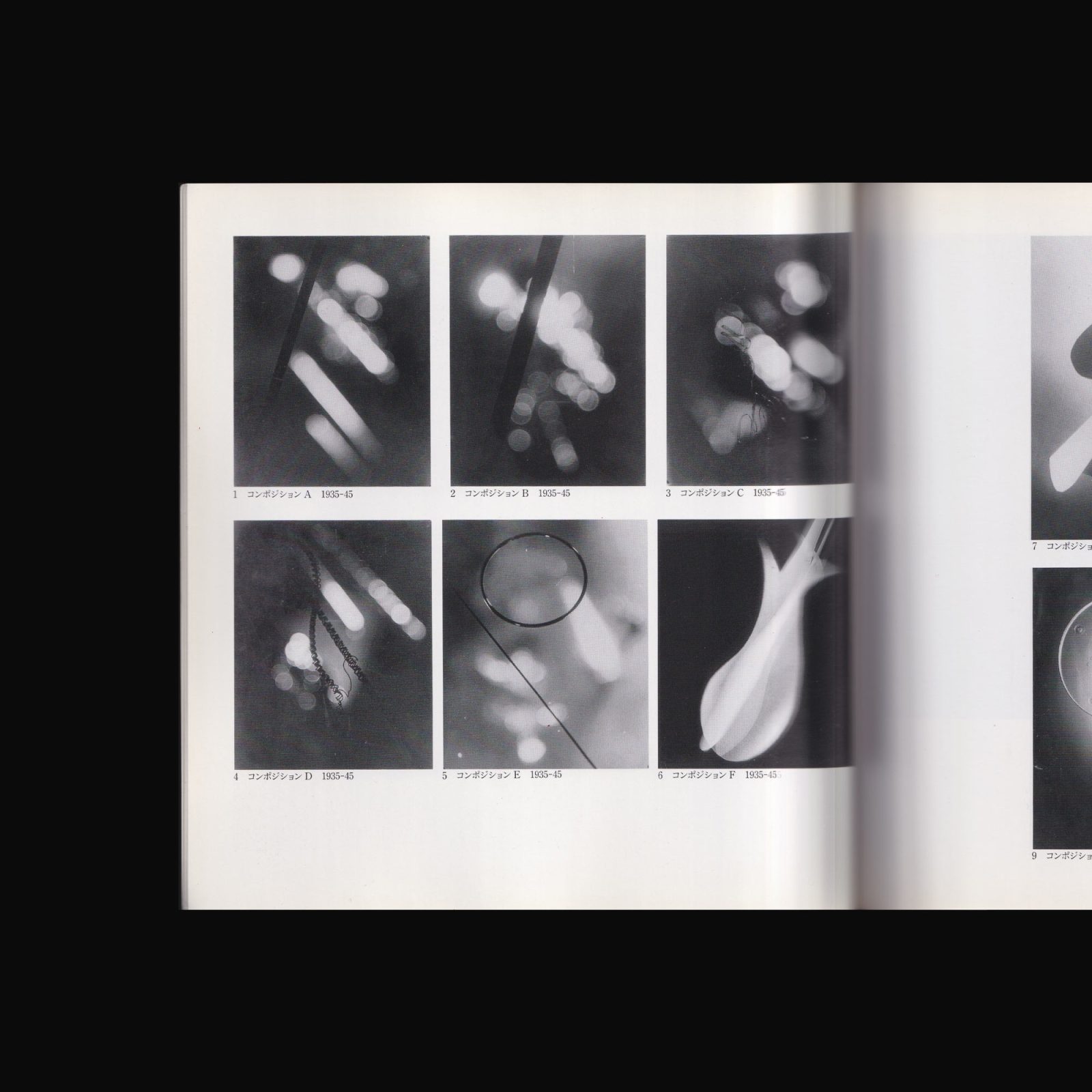
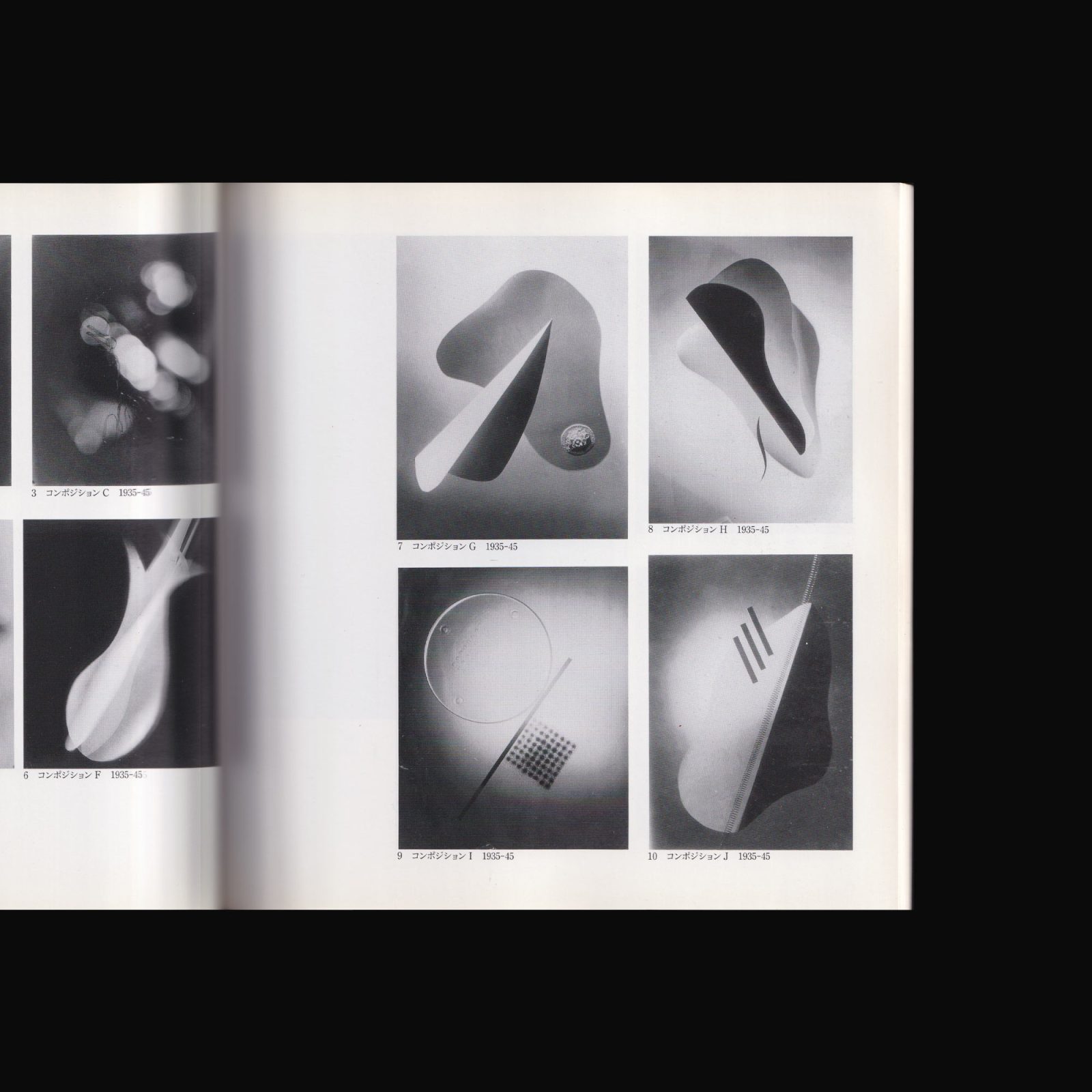
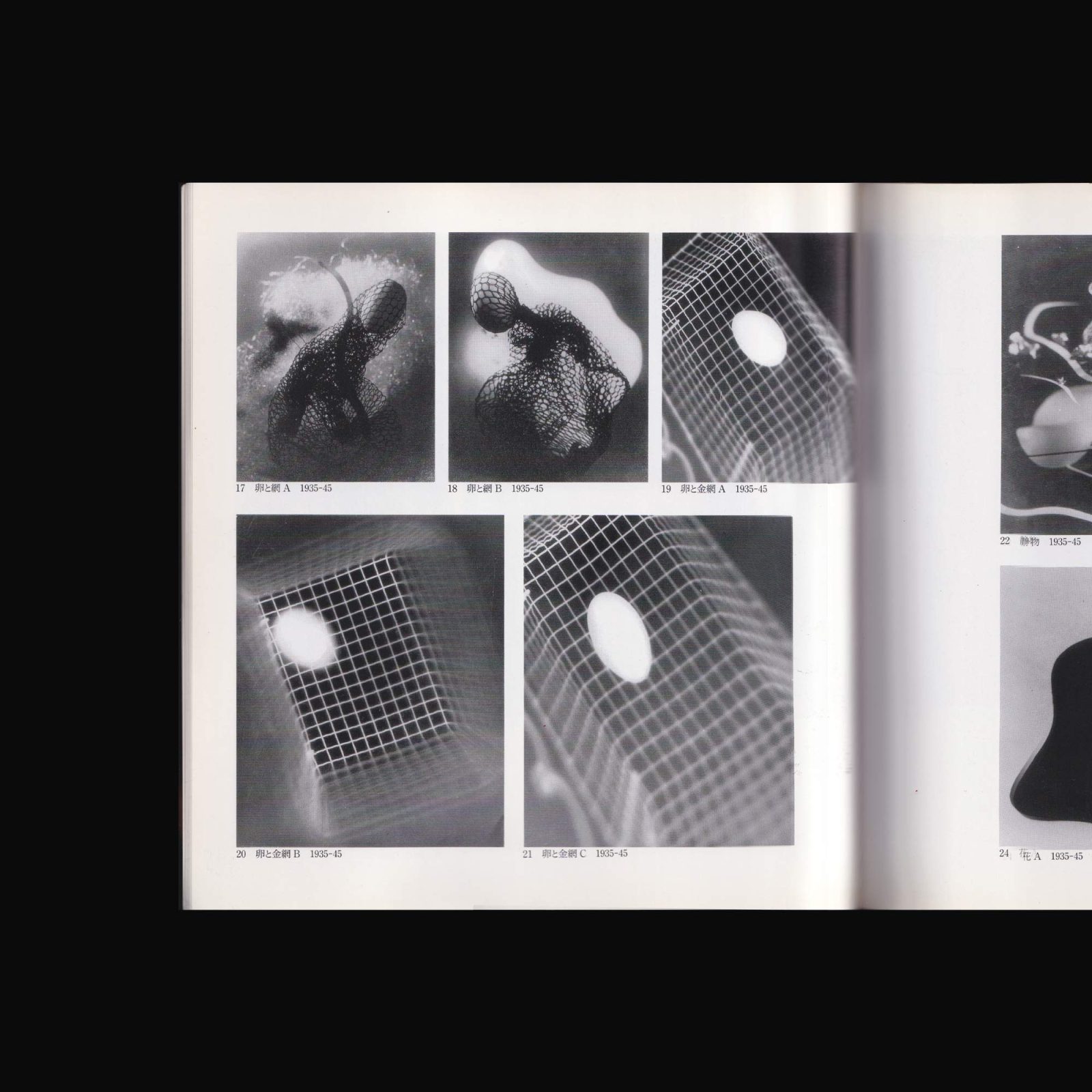
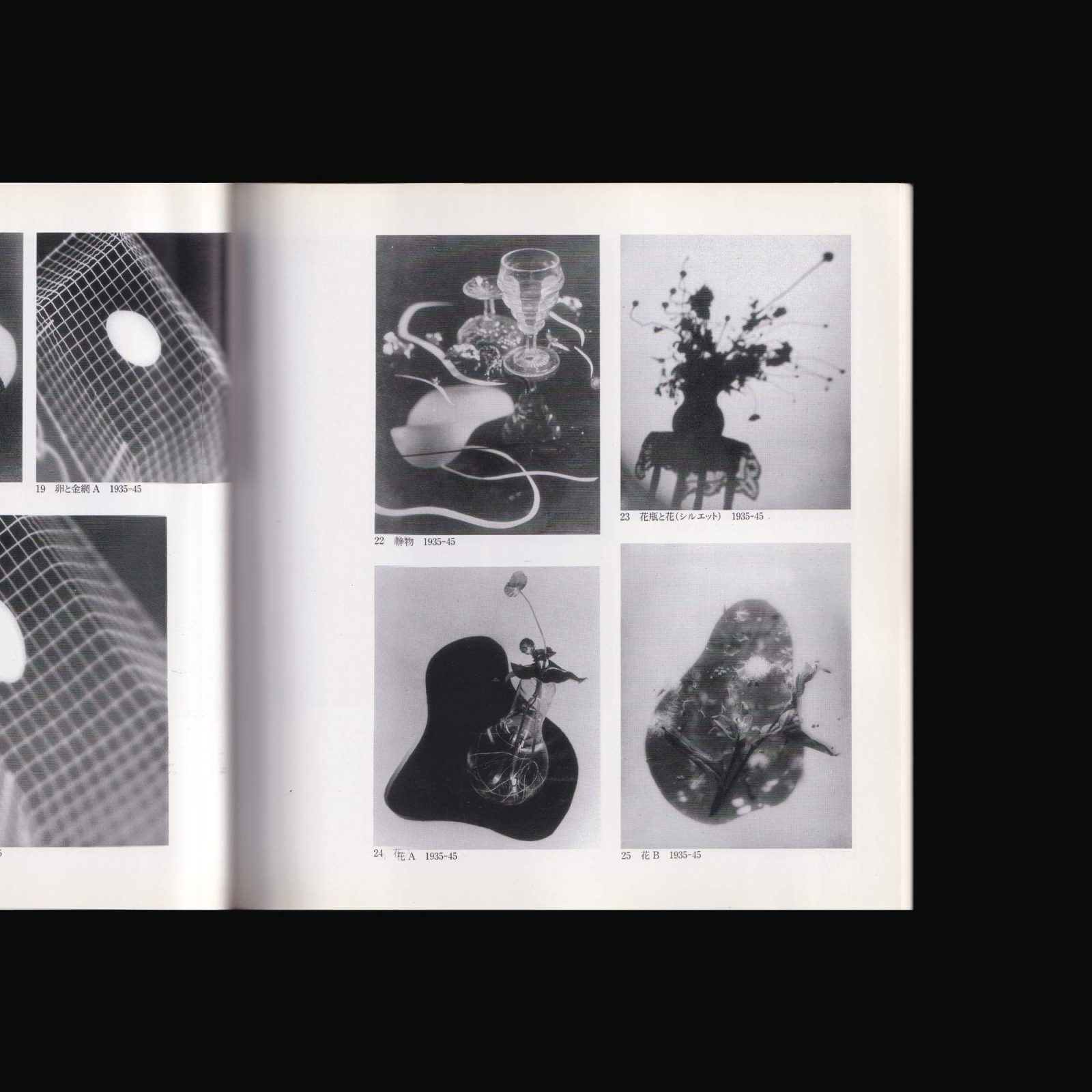
Produced on the occasion of the exhibitions at Hyogo Prefectural Museum of Modern Art, Hyogo, 29 August–15 October, 1989 and Seibu Department Store Ikebukuro, Tokyo, 27 October—15 November, 1989.
Iwata Nakayama (1895-1949) is regarded as a one of the most important contributors to the Shinko Shashin movement. From 1918 he travelled in the the west and was attracted to avant-garde movements and moved in bohemian circles where he met Shimizu Toshi, Man Ray, Fujita Tsuguji, and Enrico Prompolini. These encounters left a deep impression on him and when he returned to Japan in 1927 he energetically set about forming his own vision of ‘pure art photography’. In 1929 he settled in Ashiya (nr. Kobe) and in the following year founded the Ashiya Camera Club with Hanaya Kambei, Korai Seiji, and others. This club became the main driving force of New Photography in Japan. Together with Kimura and Nojima he founded Koga magazine in 1932 that was the most important forum for artistic photography at the time.
*Please note this publication is secondhand and may have some traces of previous ownership.
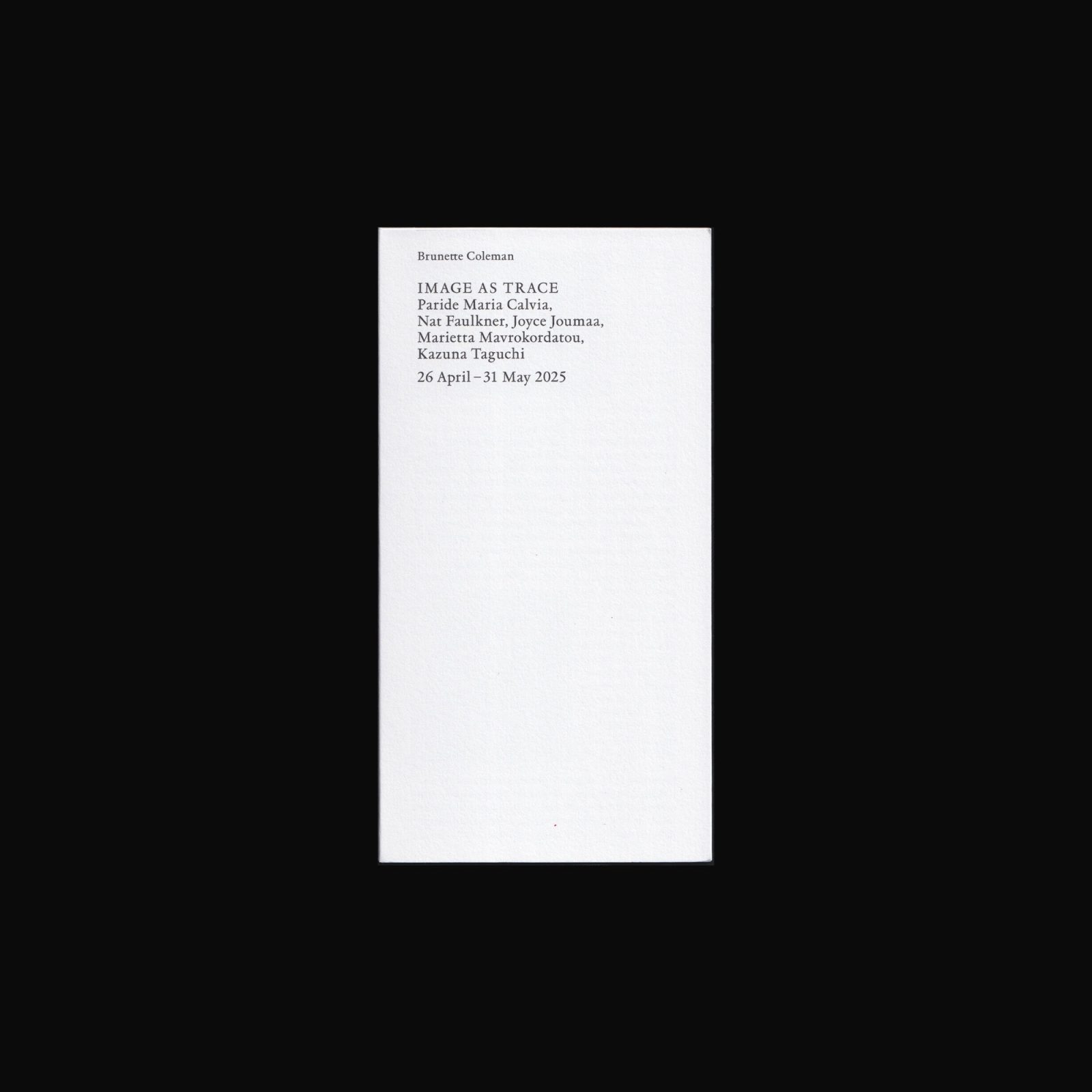
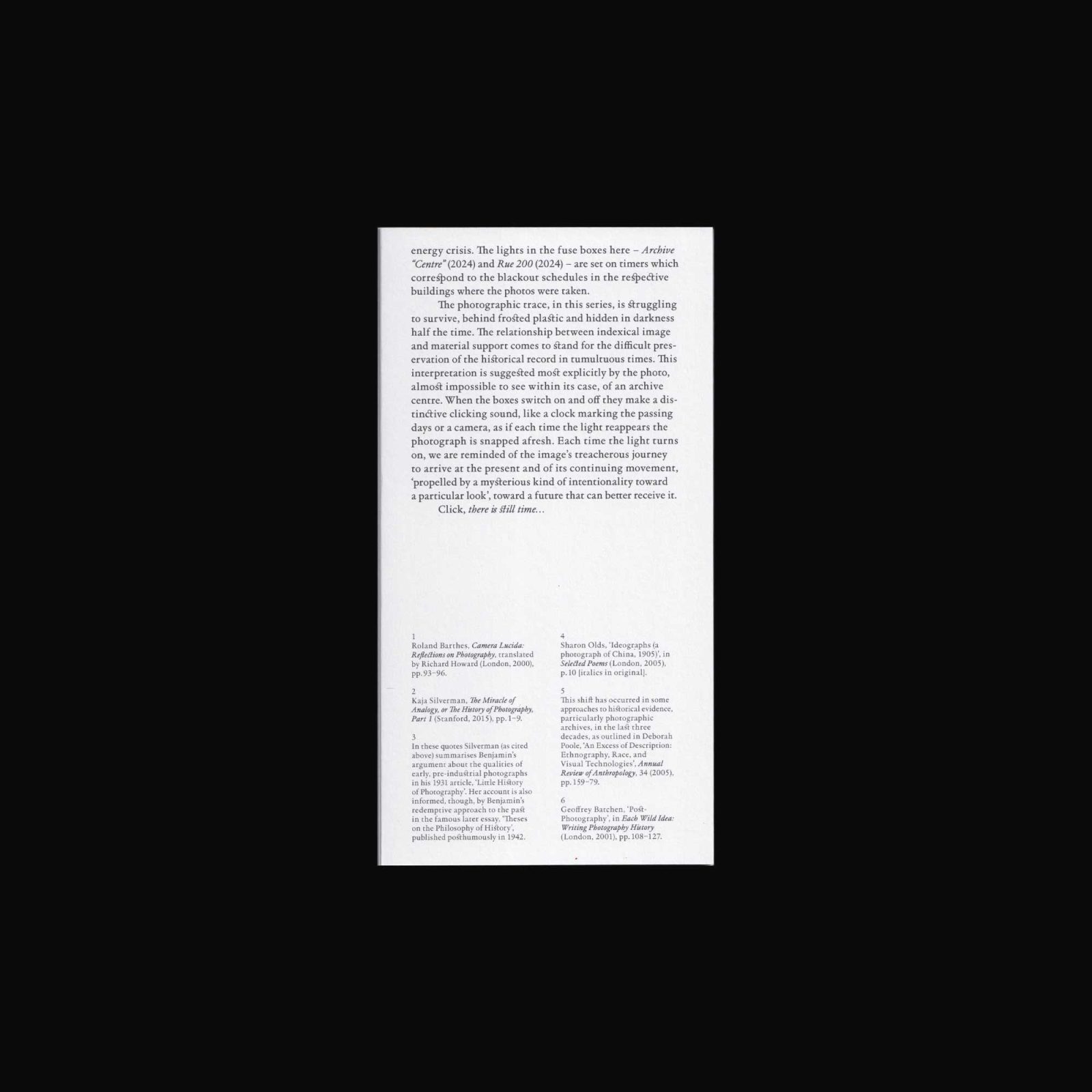
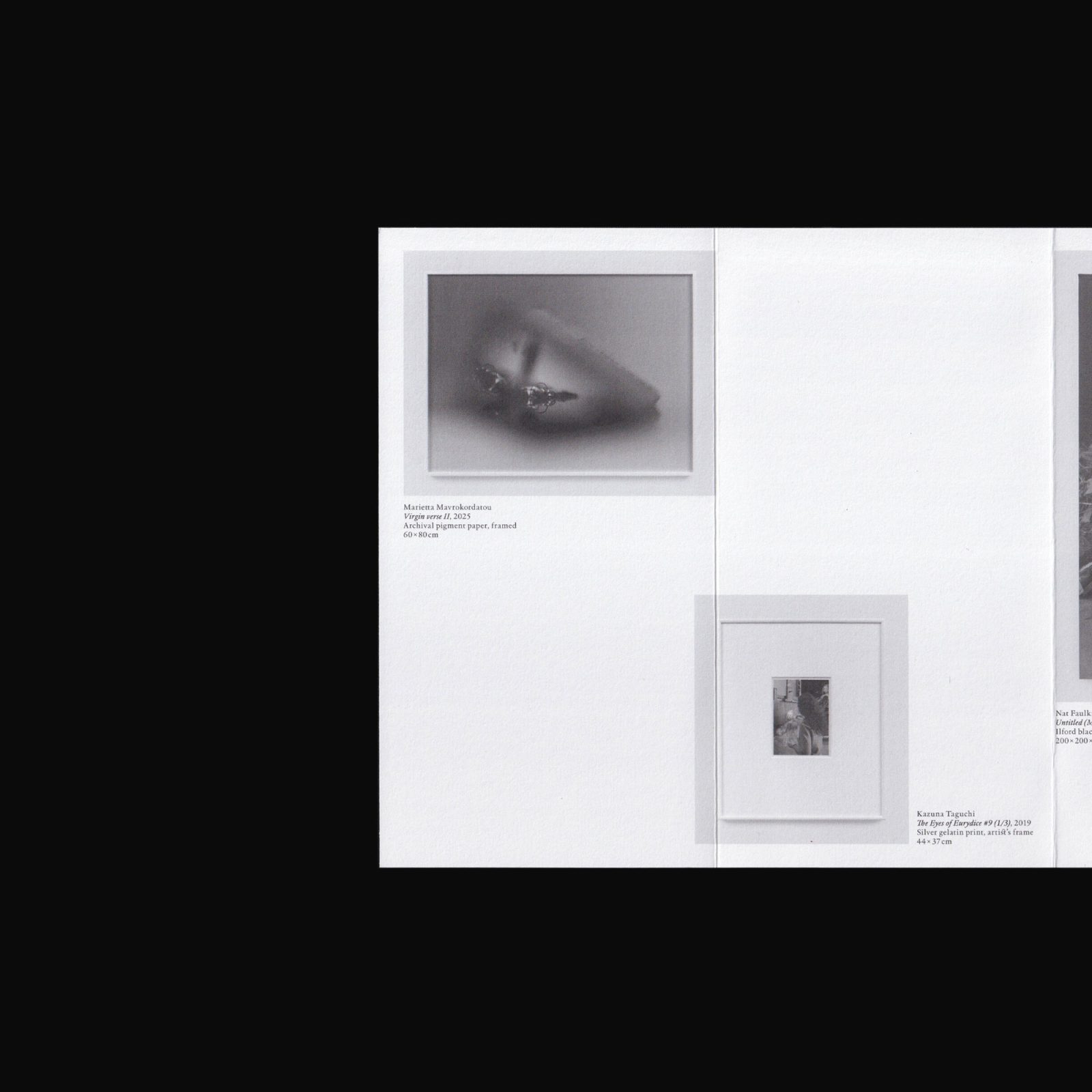
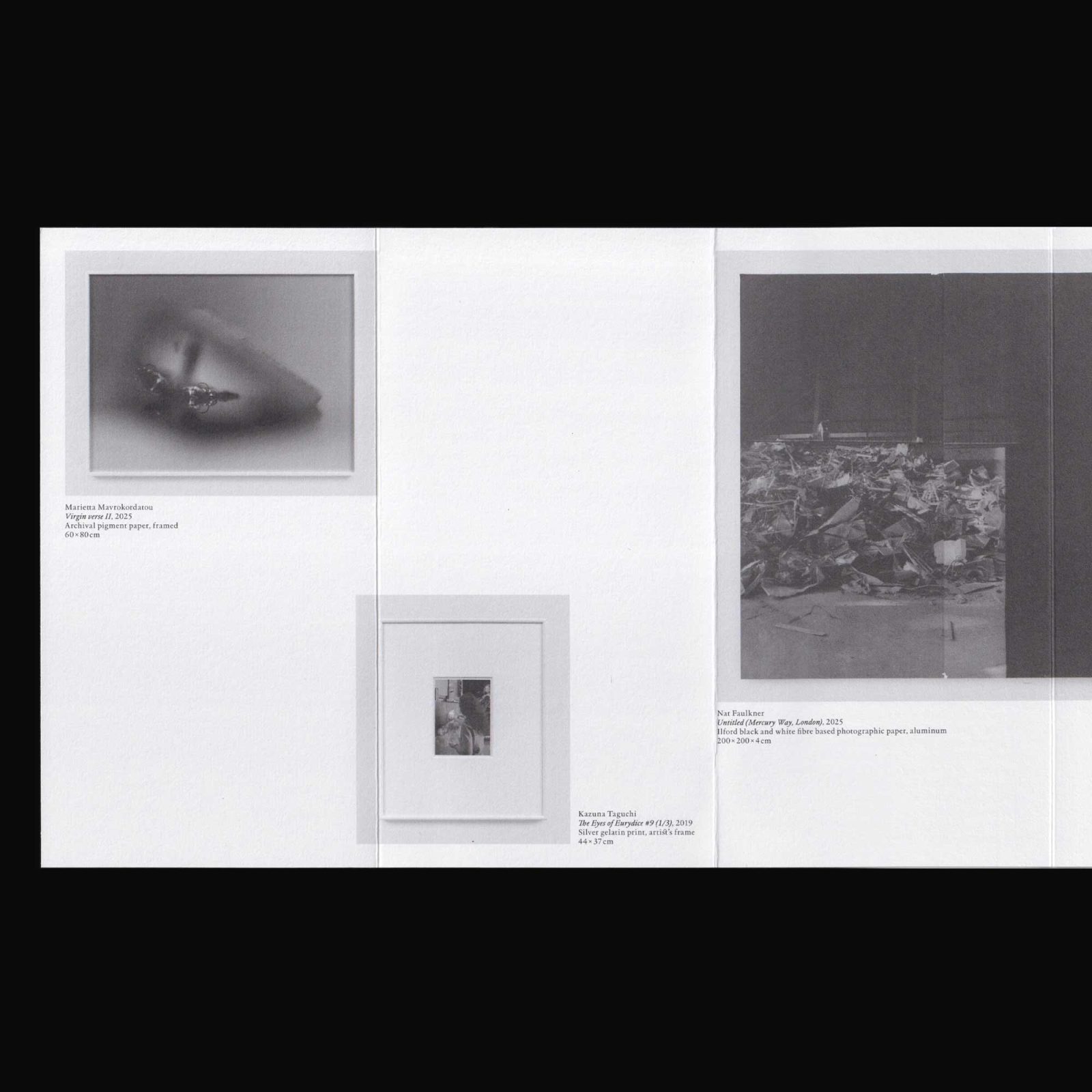
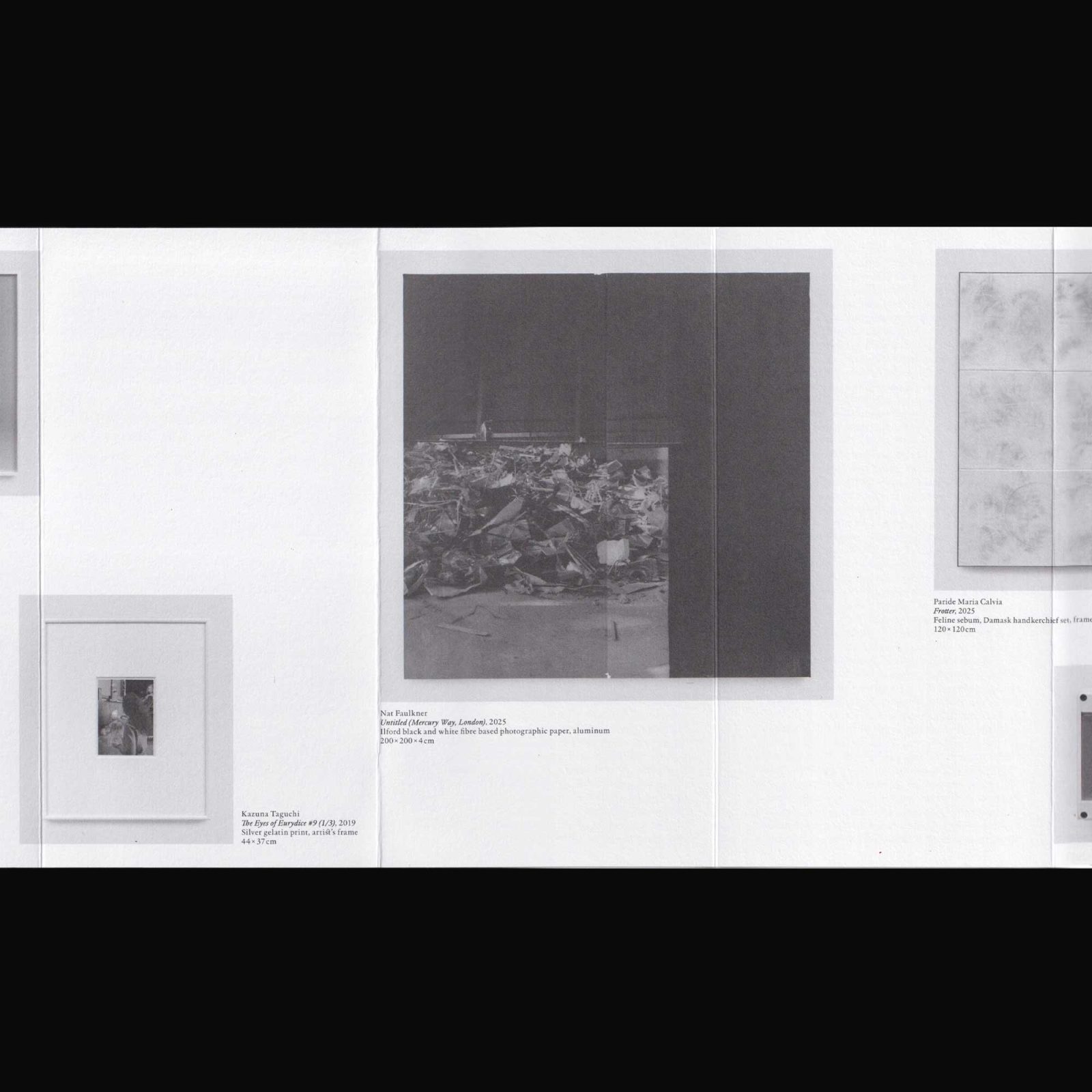

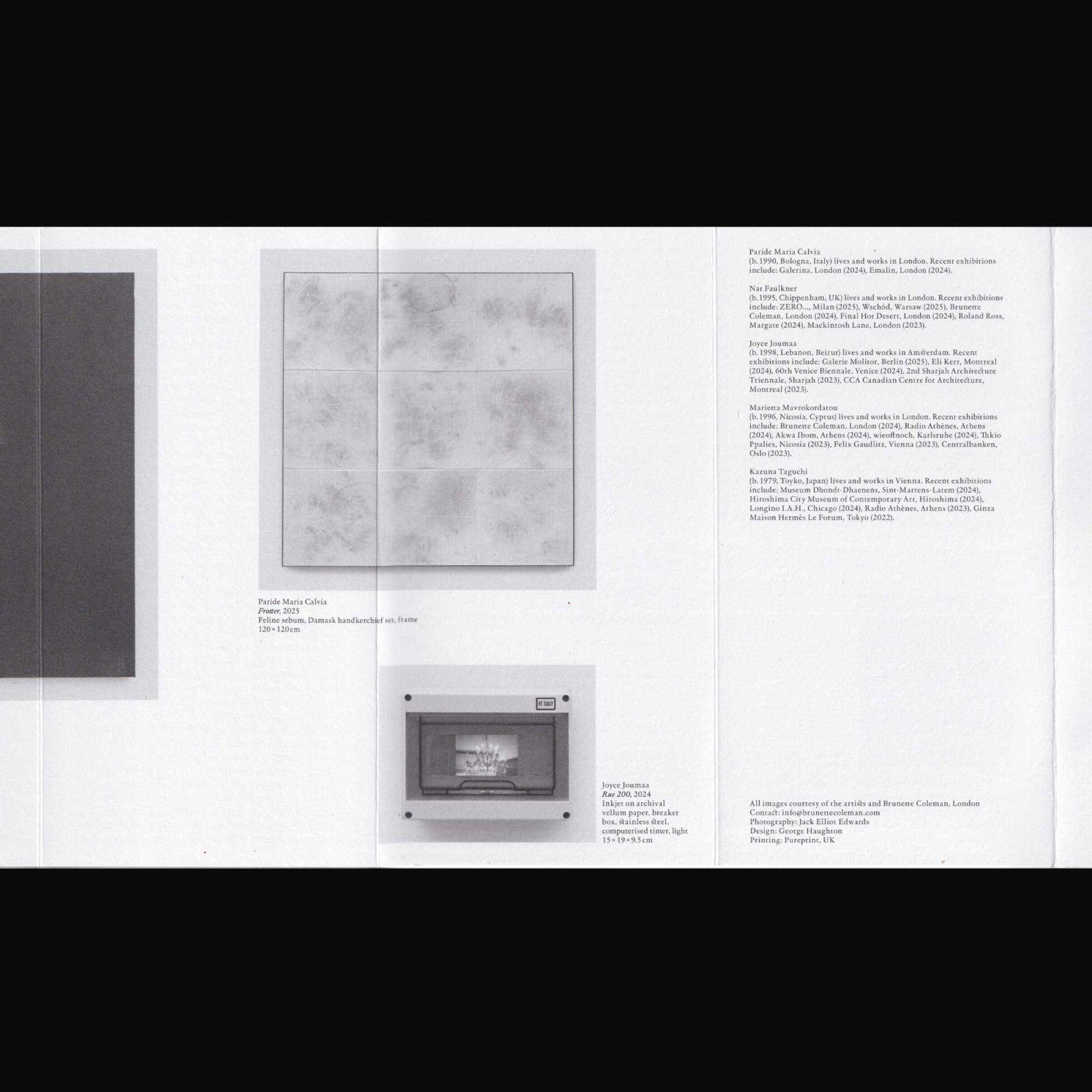
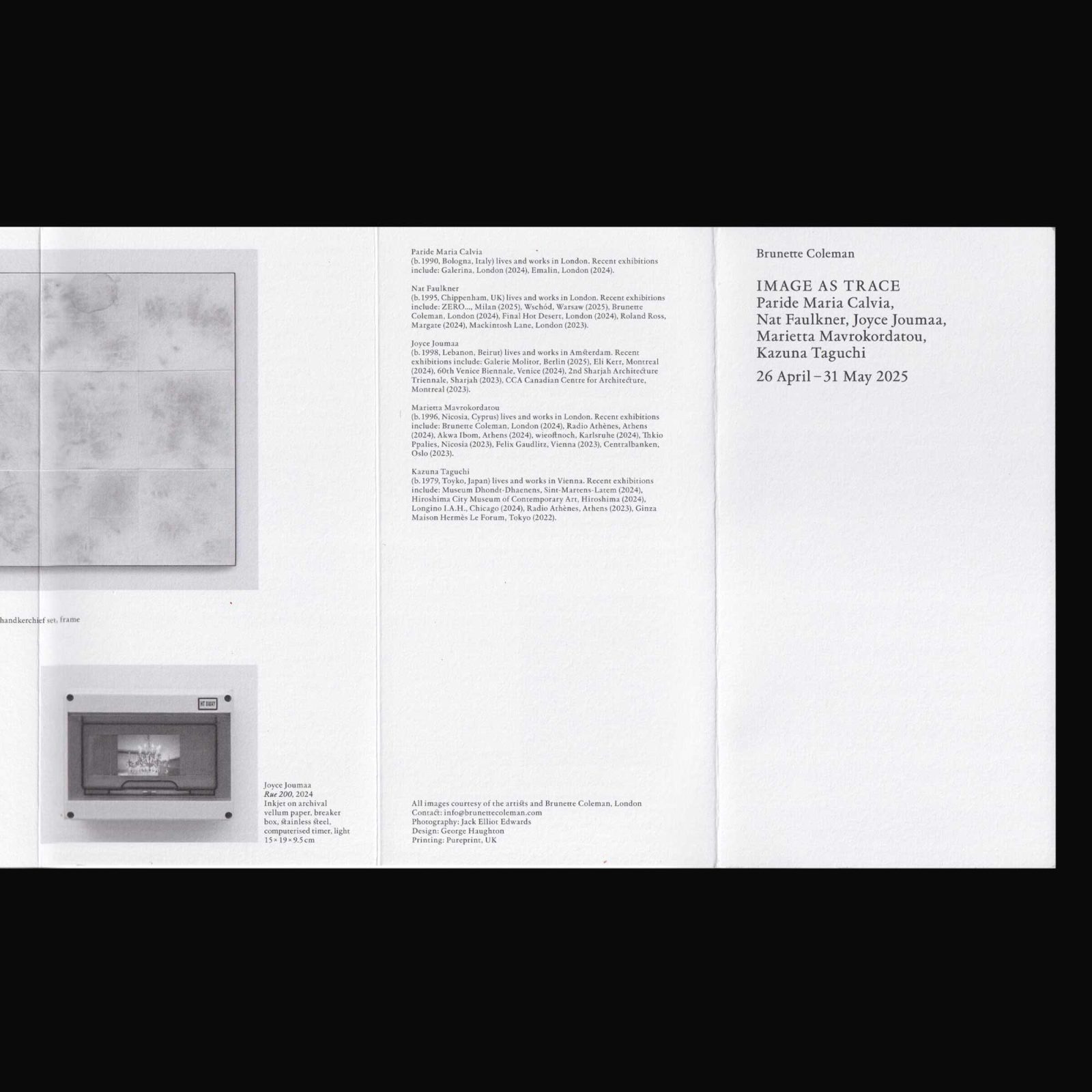
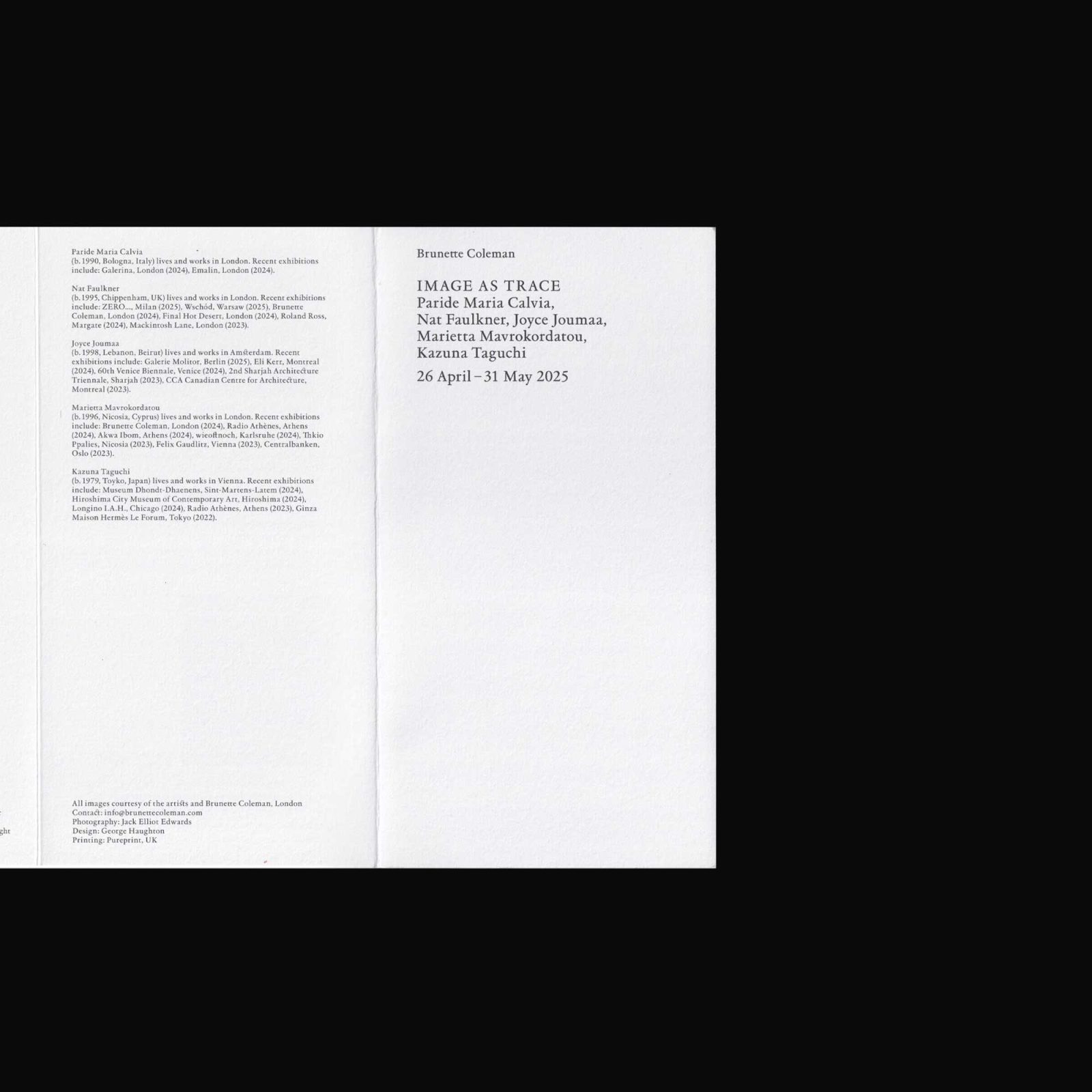
Produced on the occasion of the exhibition Image as Trace at Brunette Coleman, London, 26 April–31 May, 2025. Featuring Paride Maria Calvia, Nat Faulkner, Joyce Joumaa, Marietta Mavrokordatou and Kazuna Taguchi.
“Such images are indeed able to usurp reality because first of all a photograph is not only an image (as a painting is an image), an interpretation of the real; it is also a trace, something directly stenciled off the real, like a footprint or a death mask.” – Susan Sontag, On Photography
The artists in Image as Trace favour experiential techniques that aren’t subjected to traditional modes of photography. With a shared affinity for exposing their means of production, the works reveal Sontag’s image as trace – charting the material process of photography itself, as well as the imprints of time.
Designed by George Haughton.